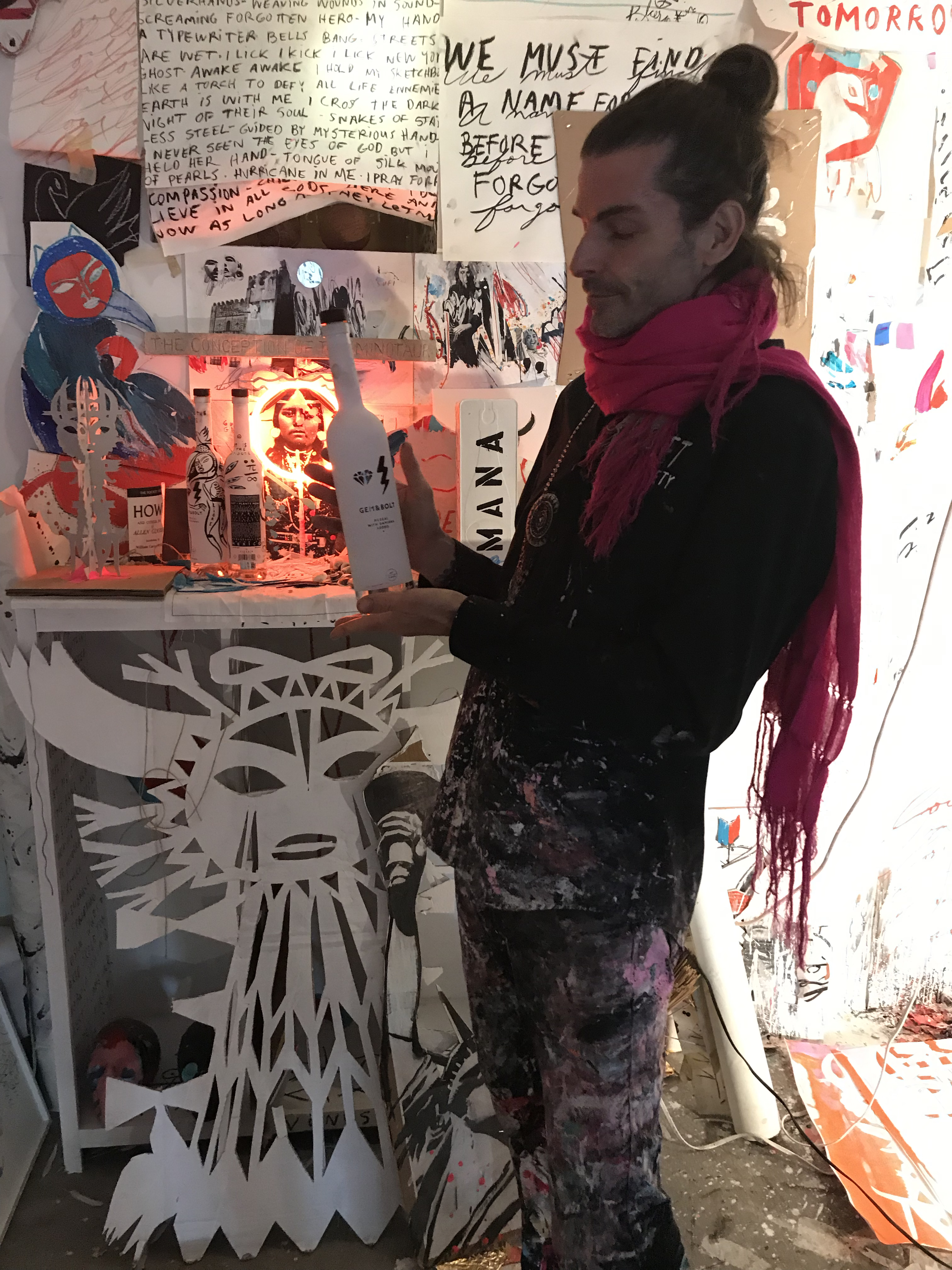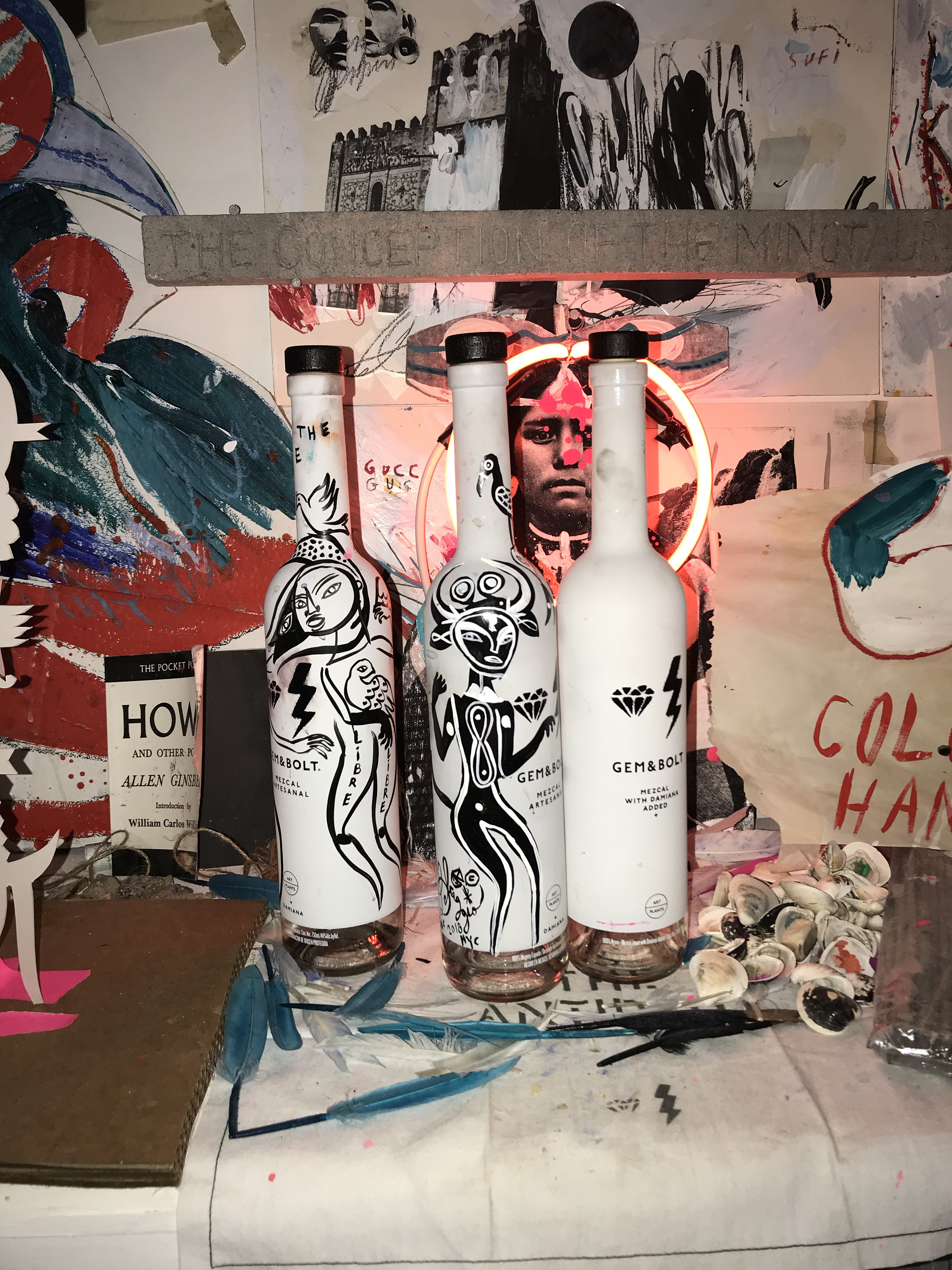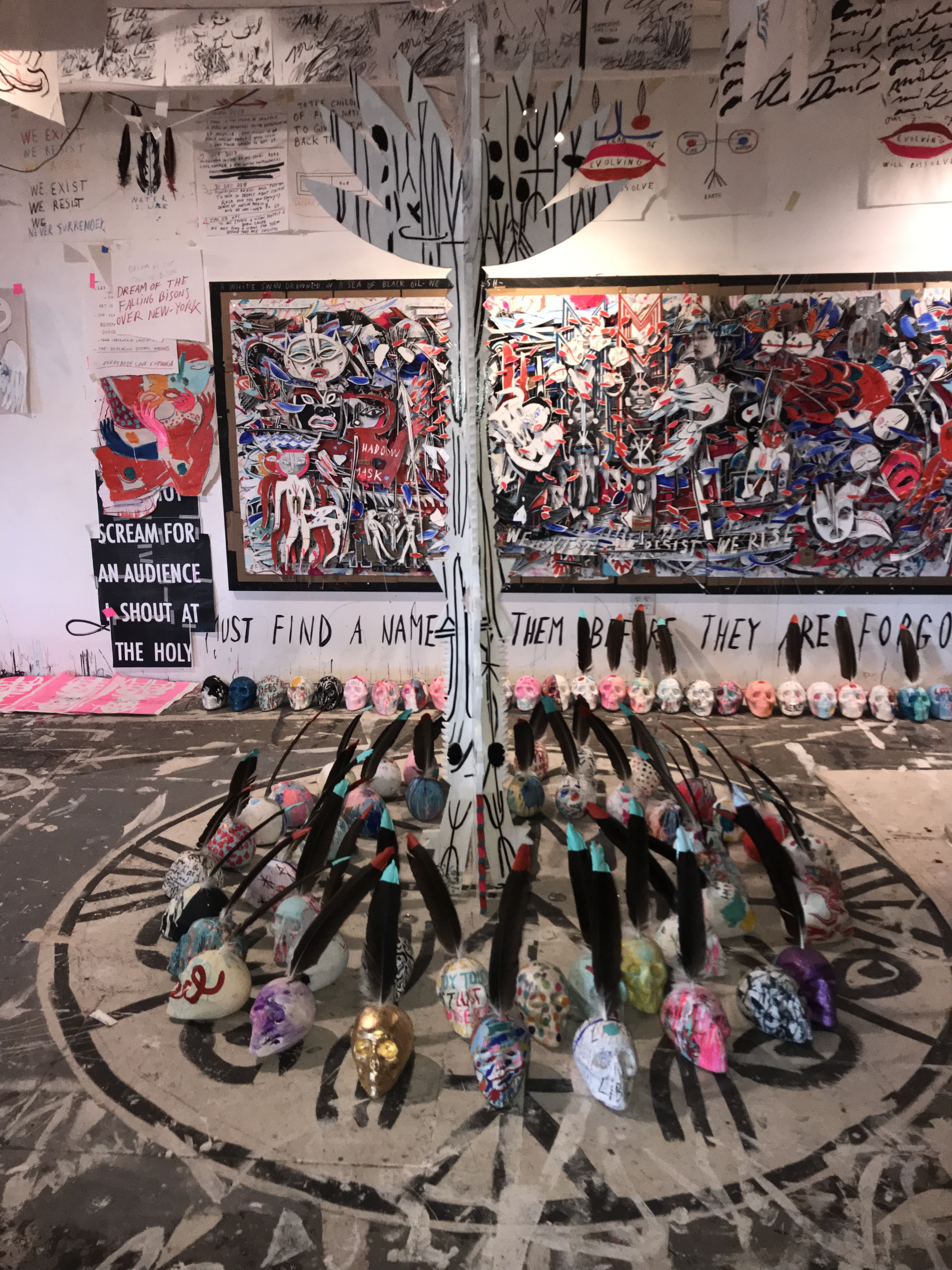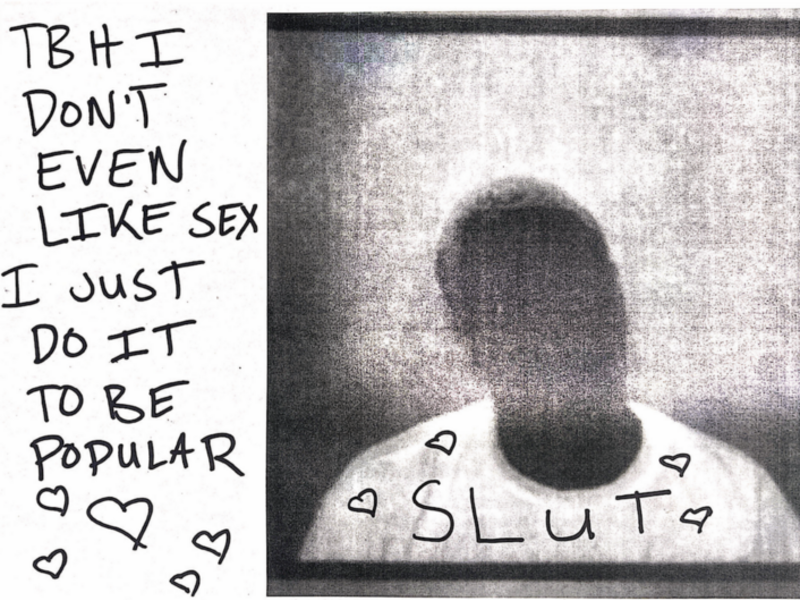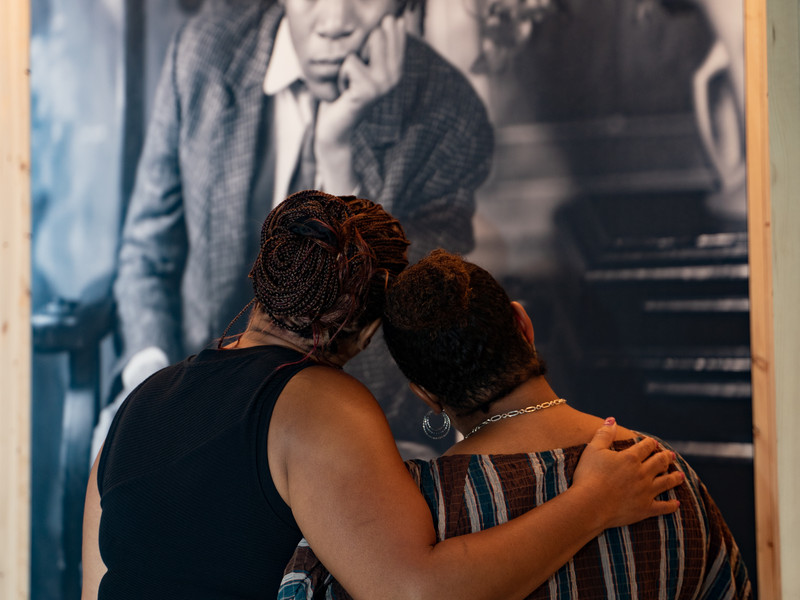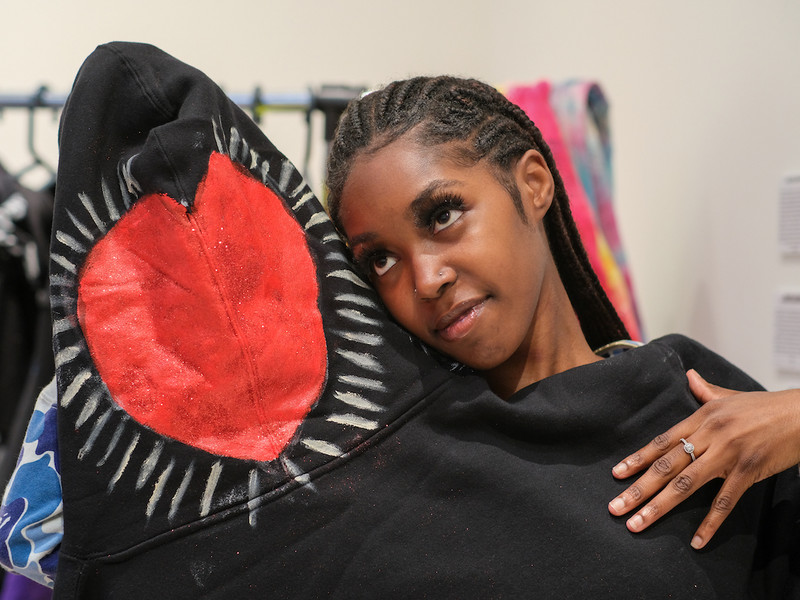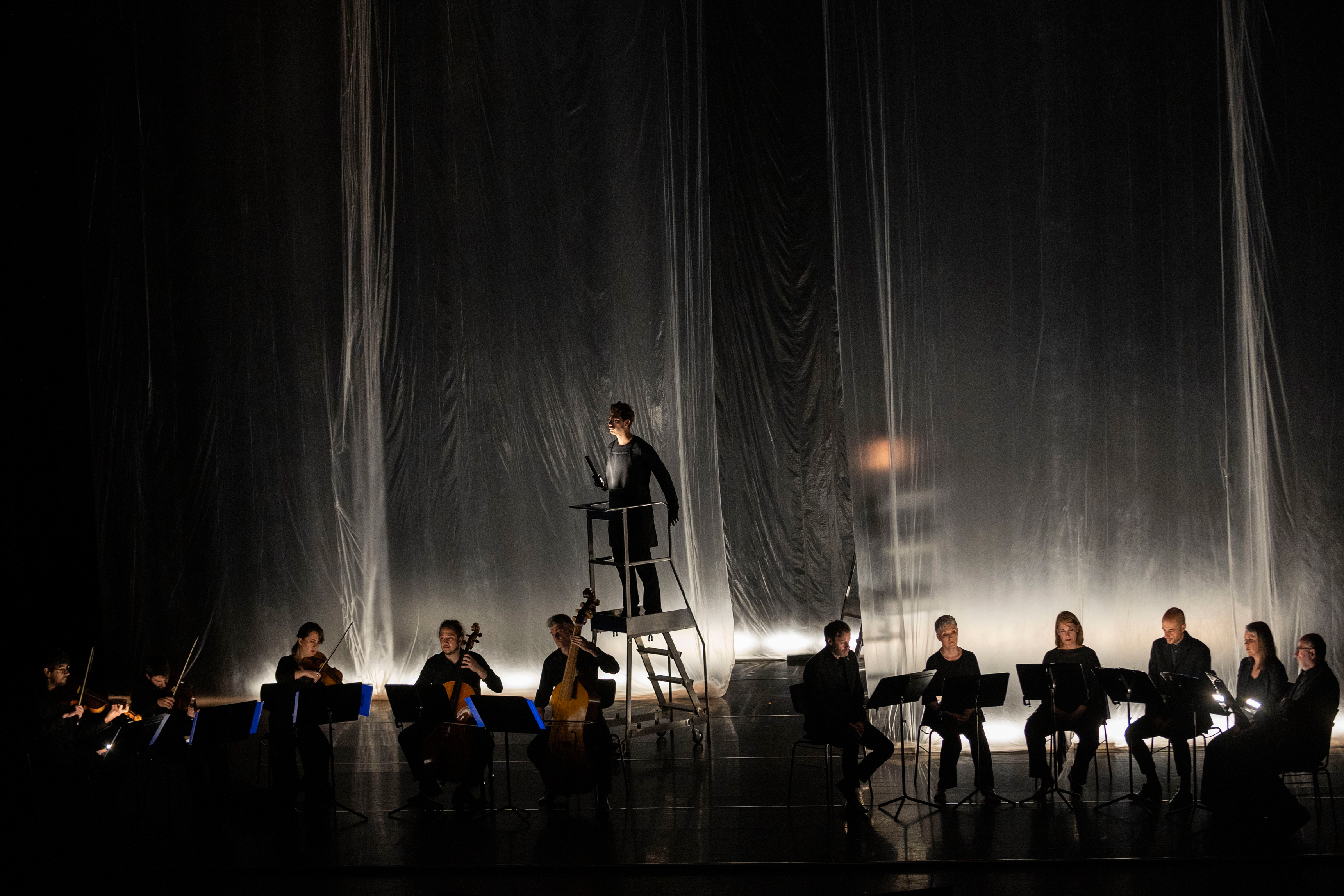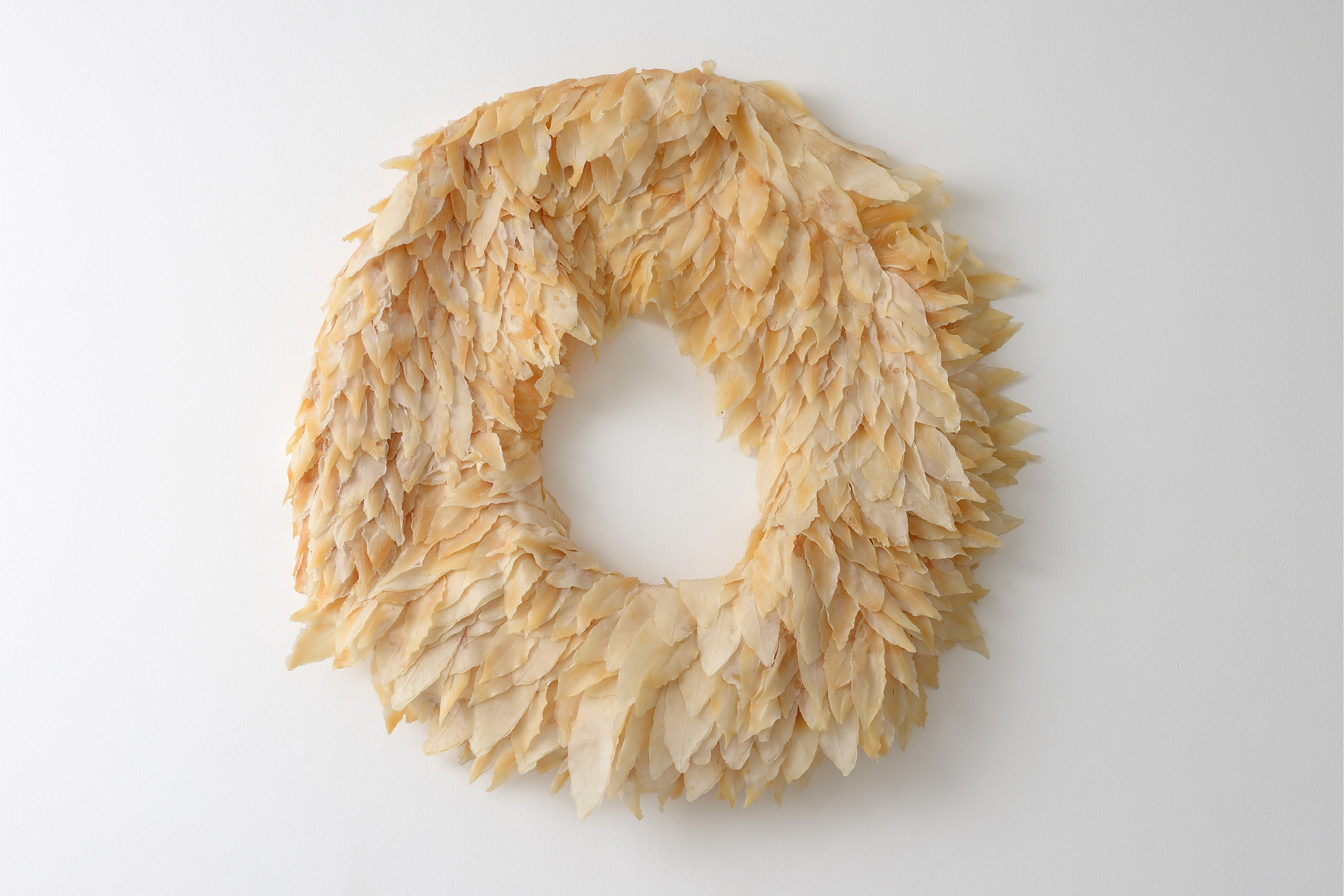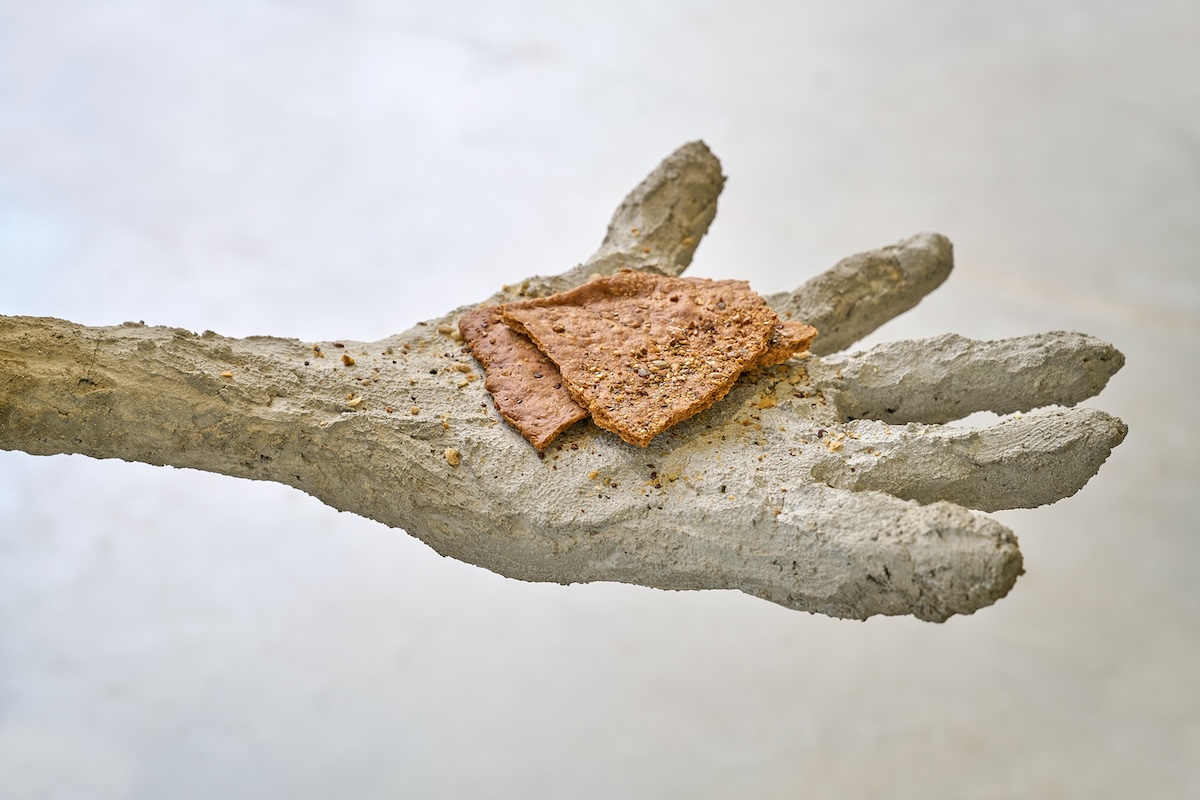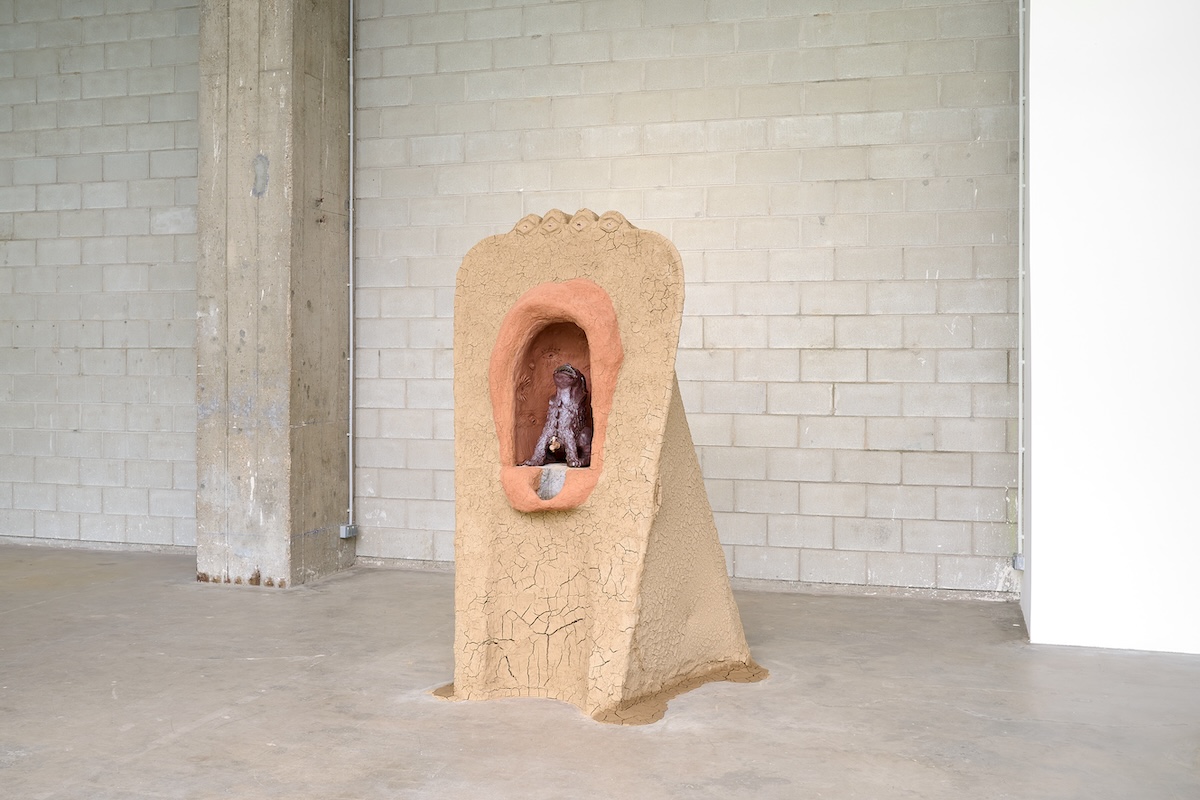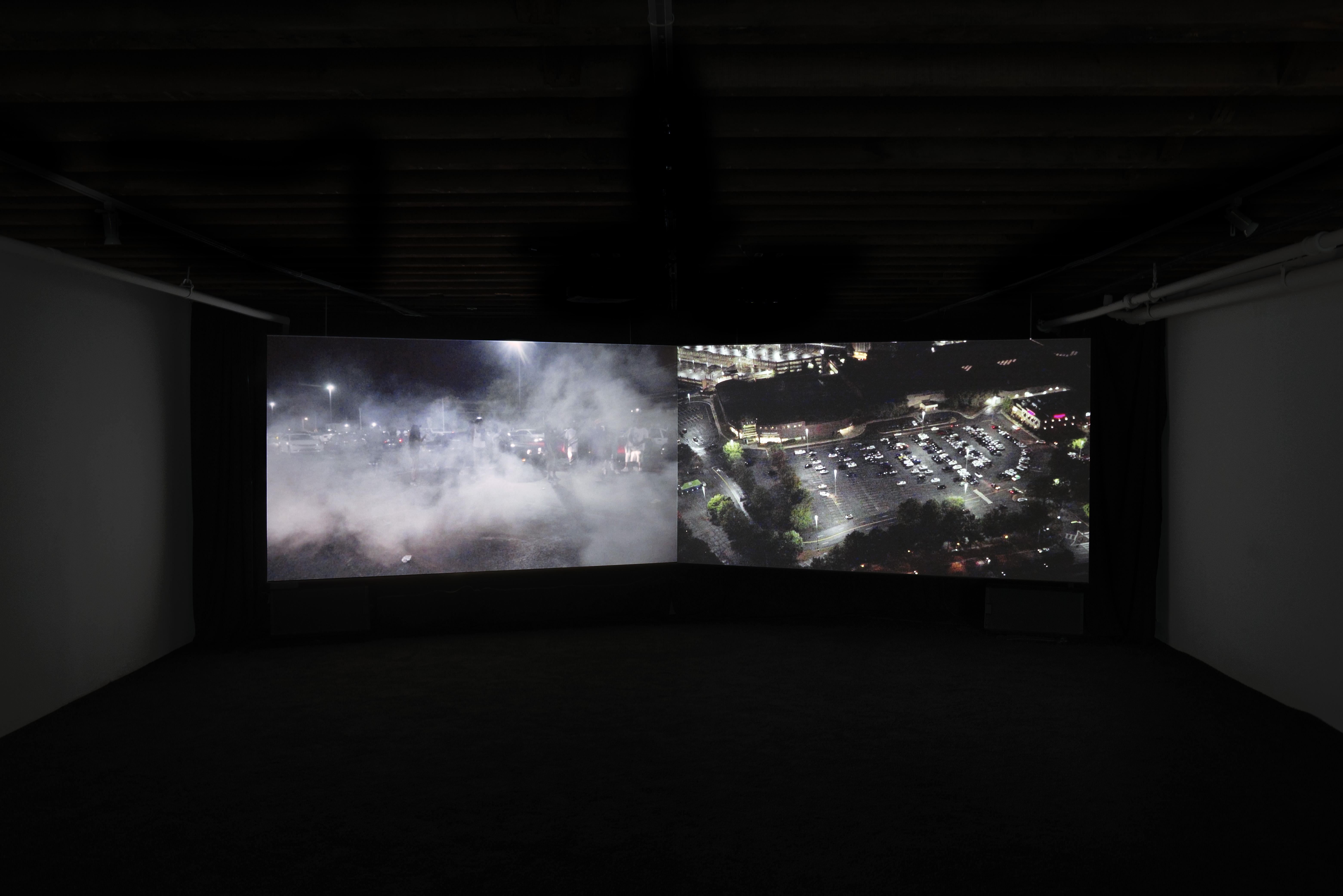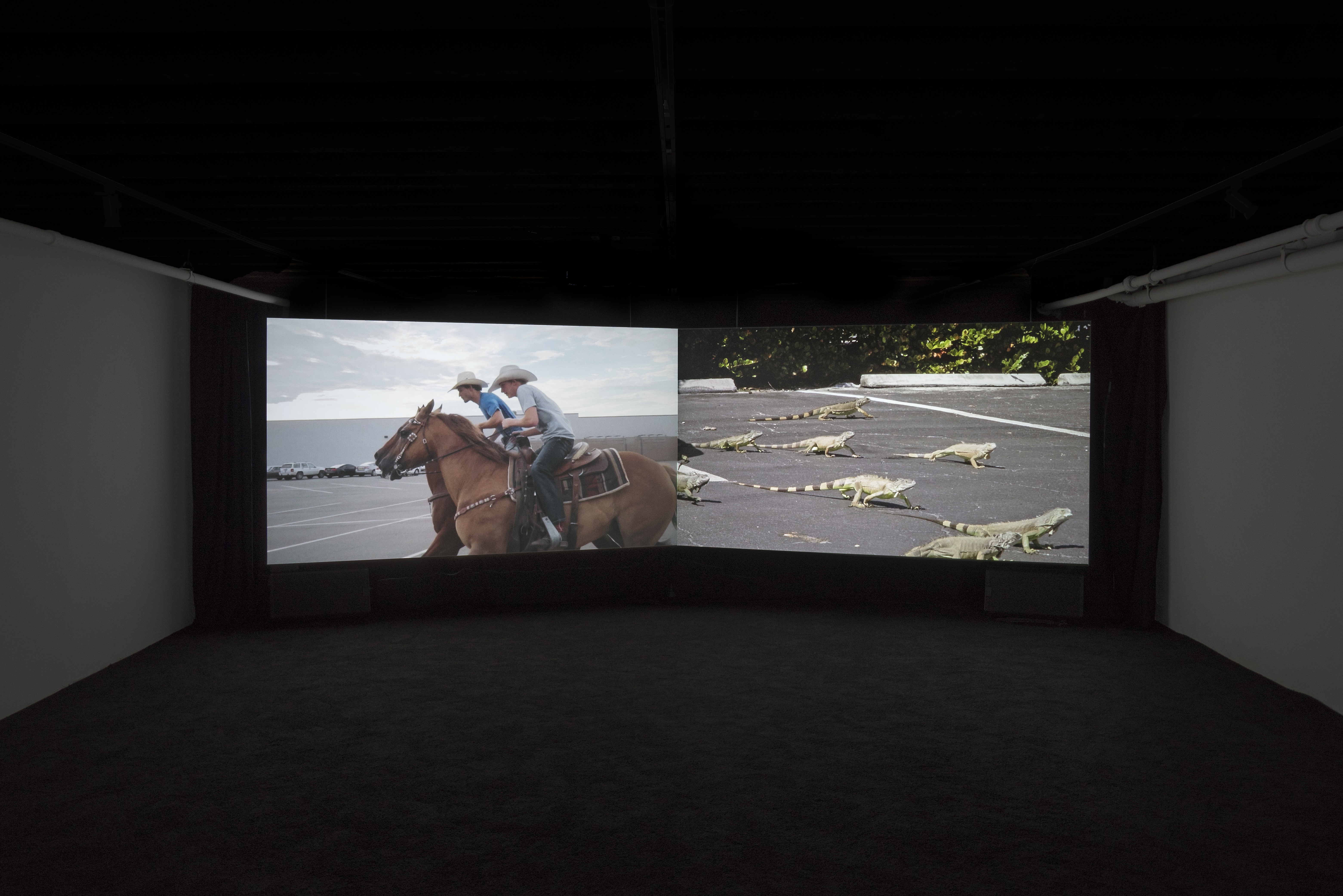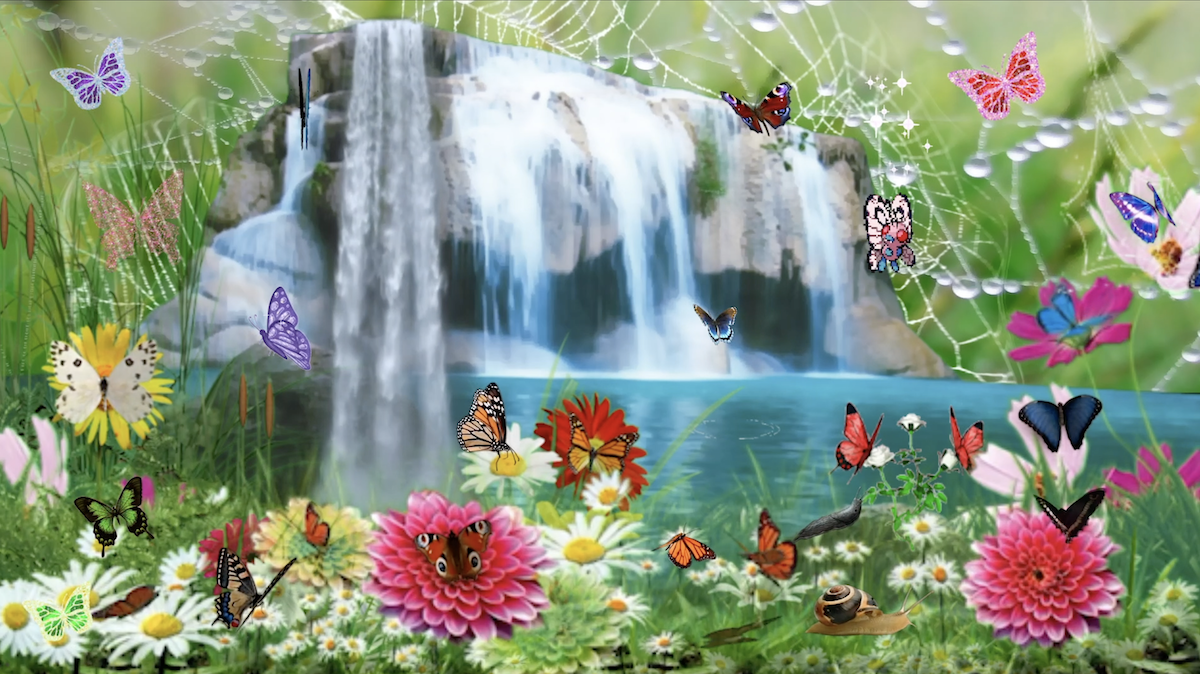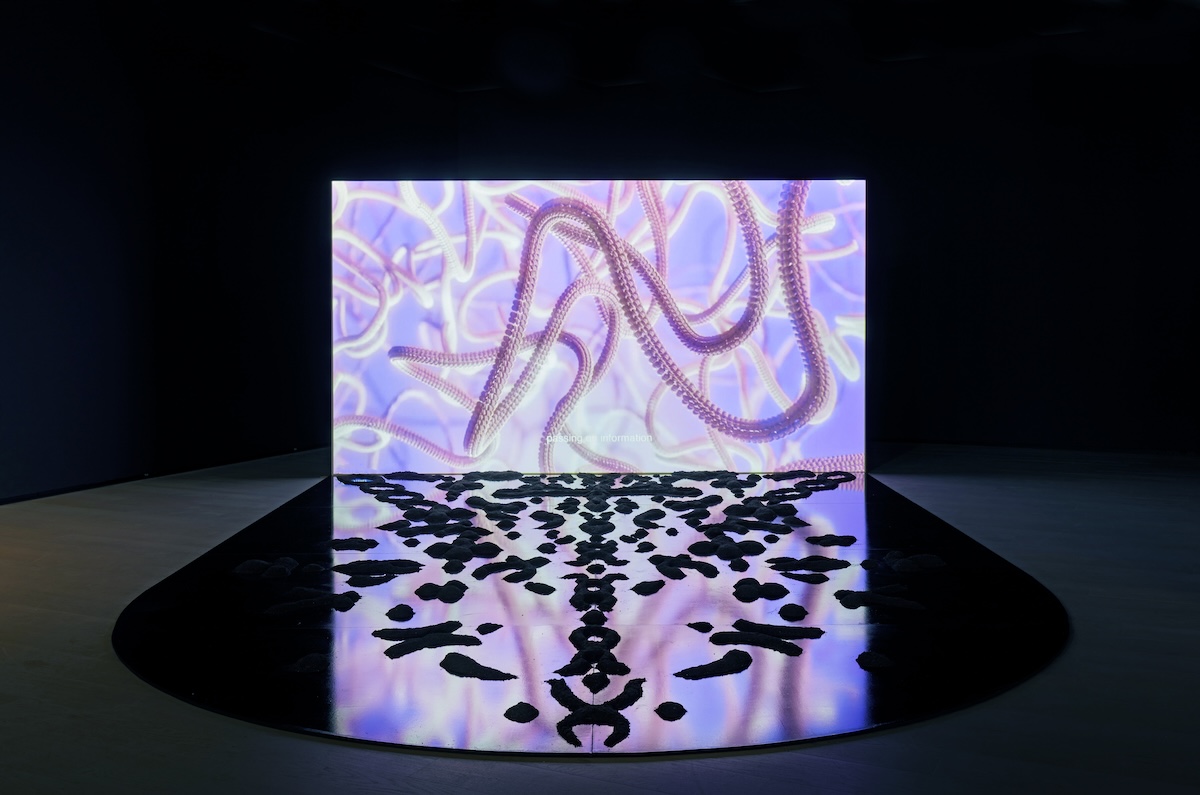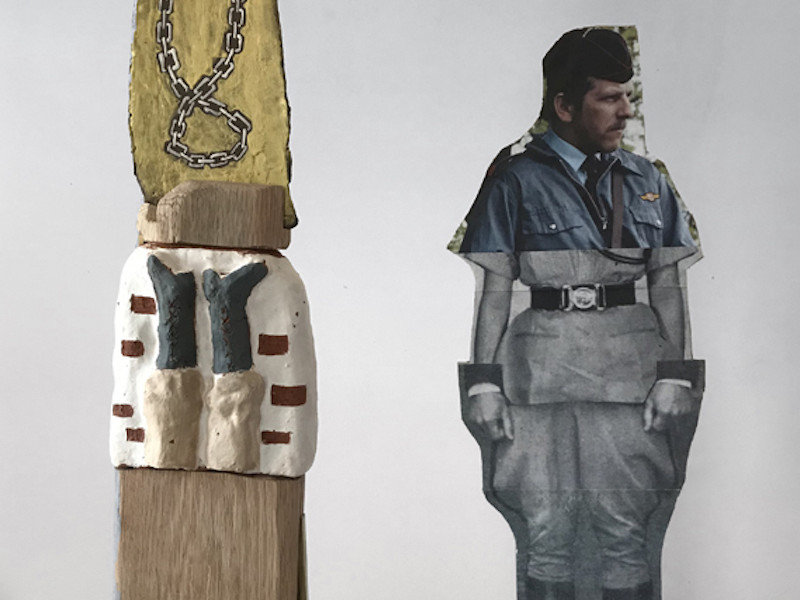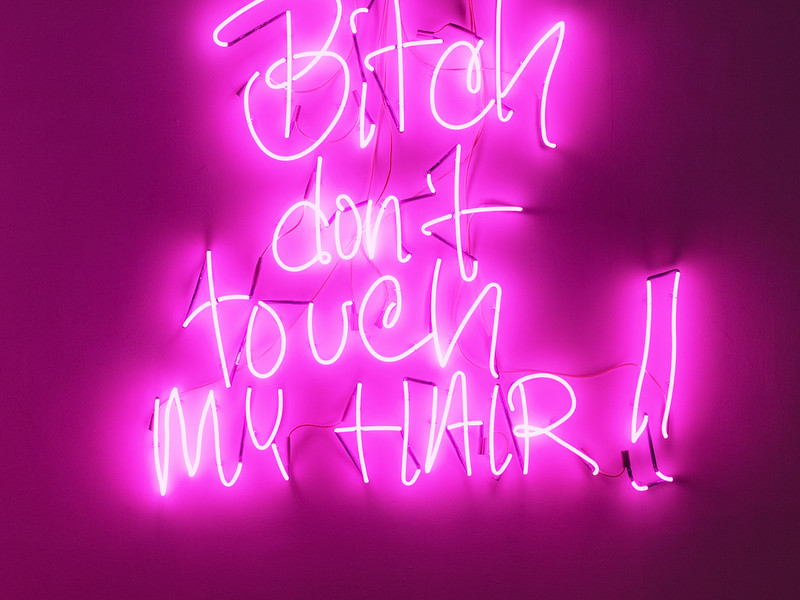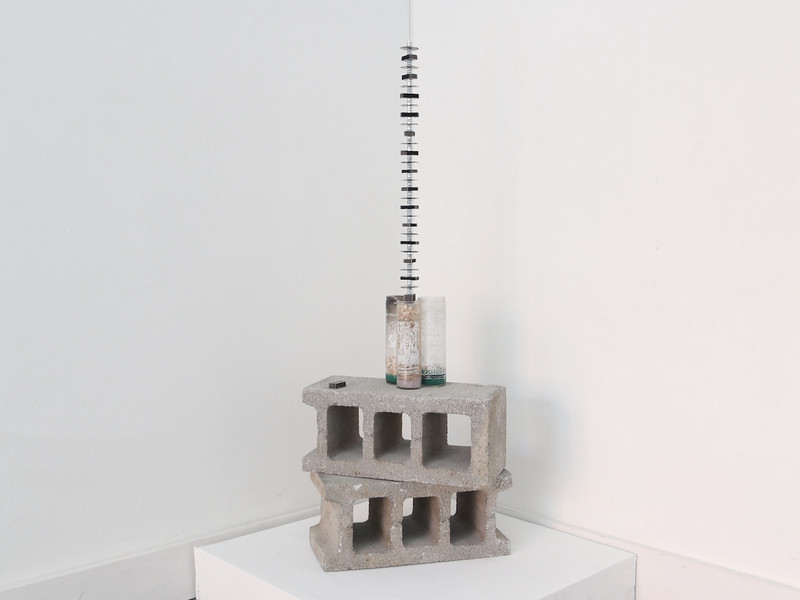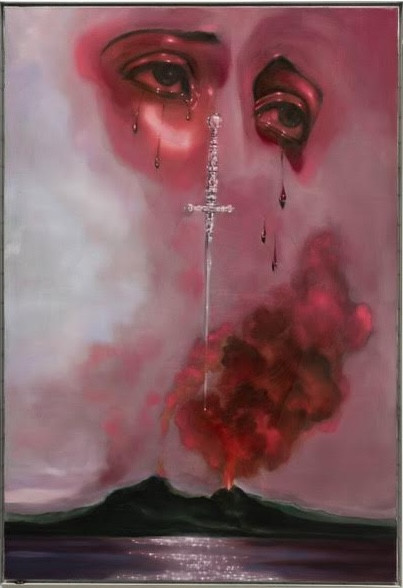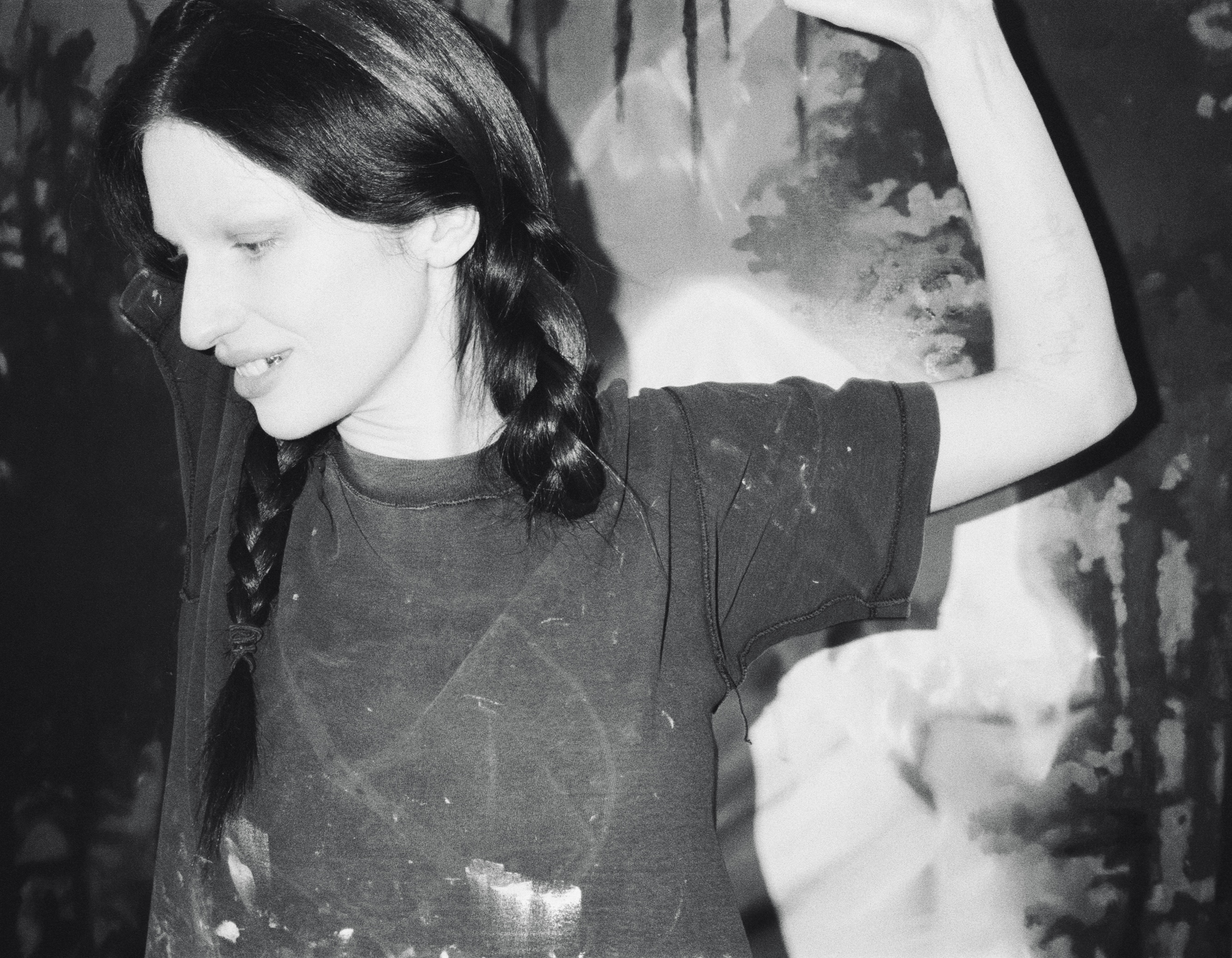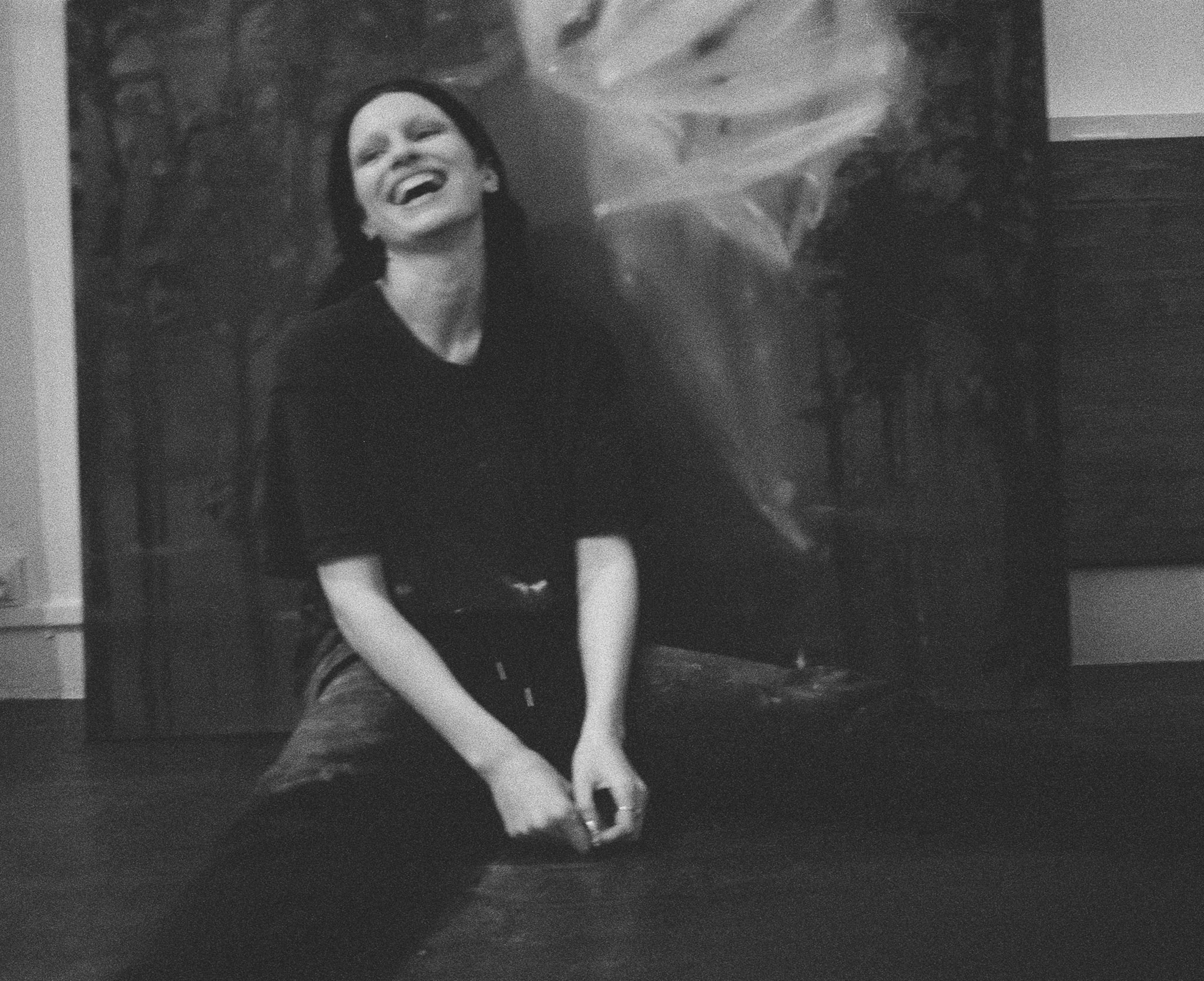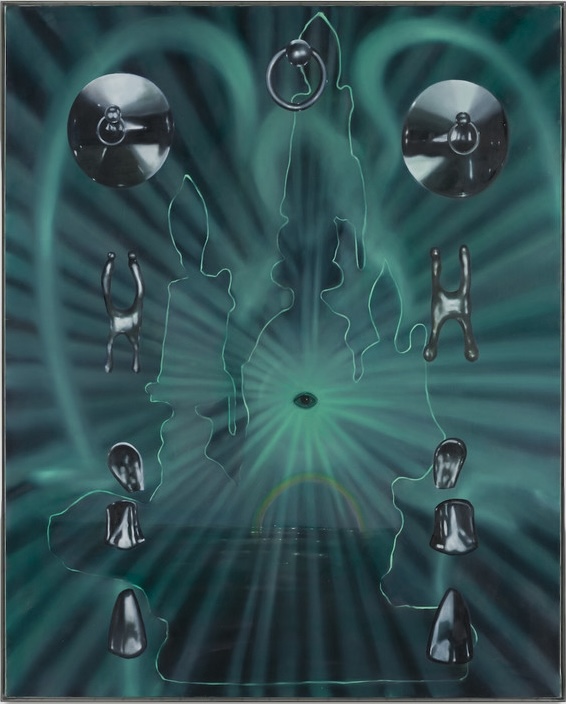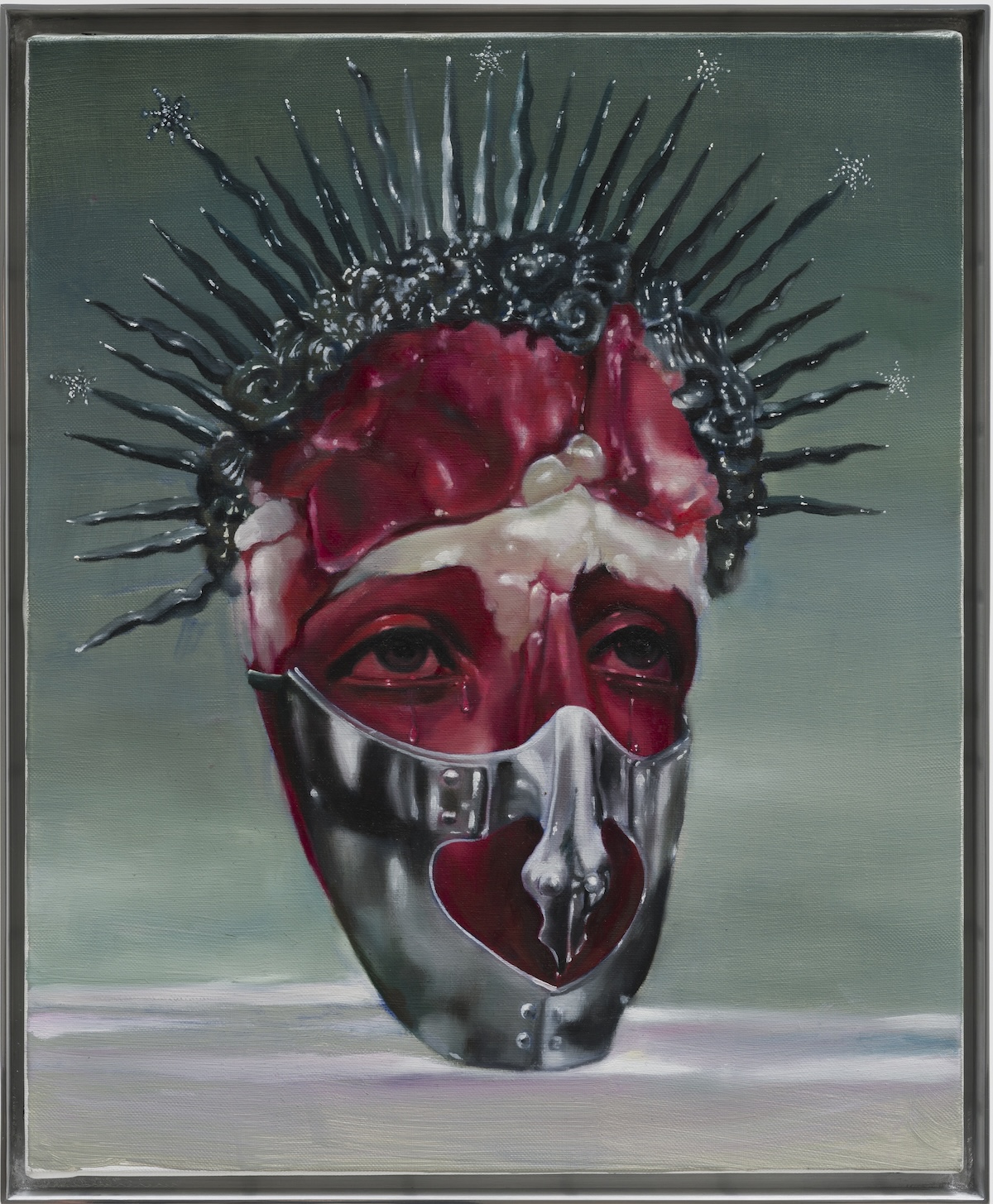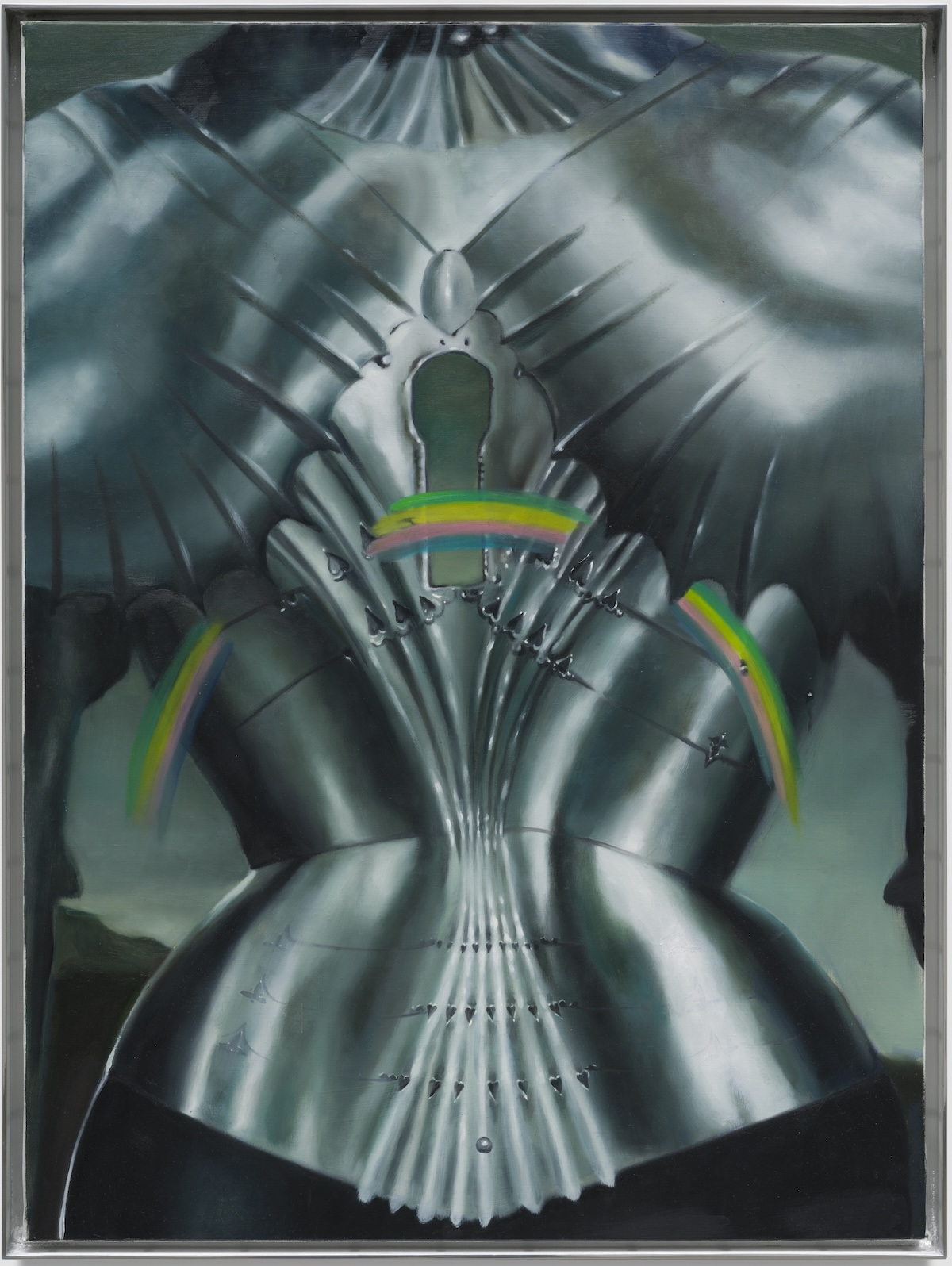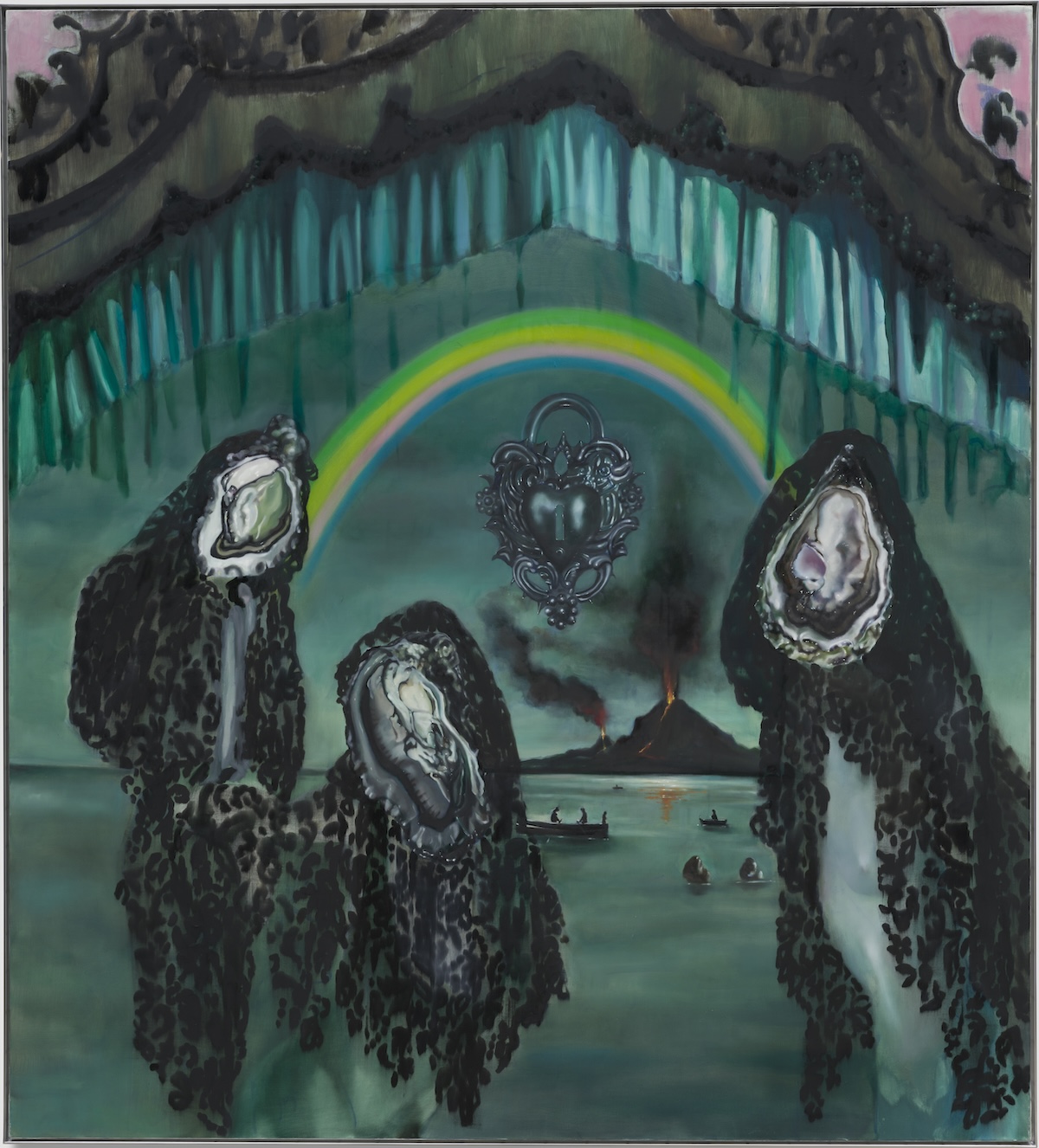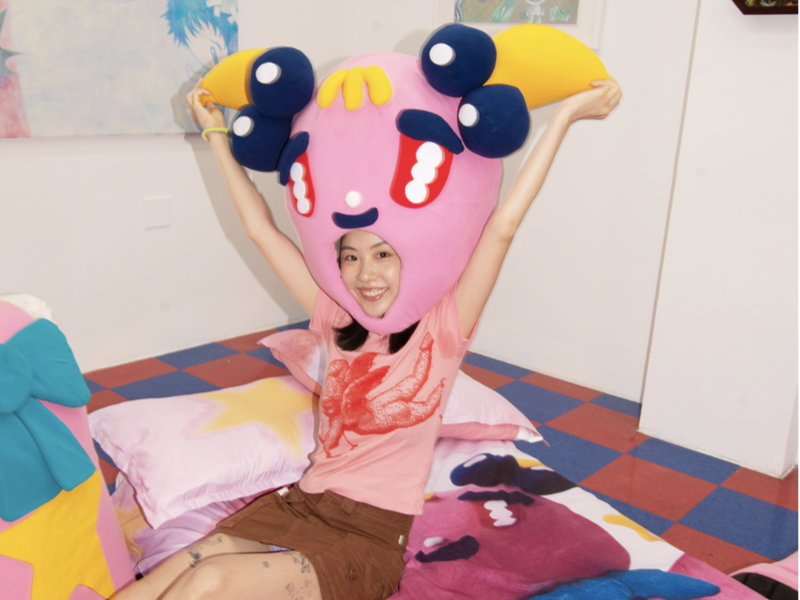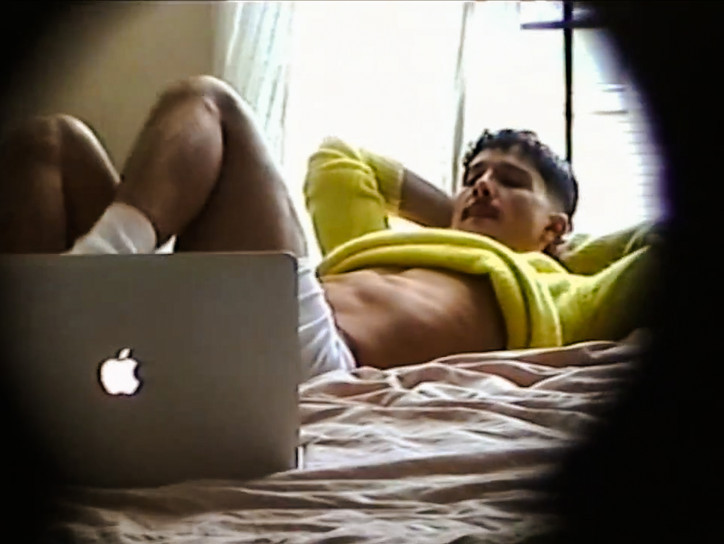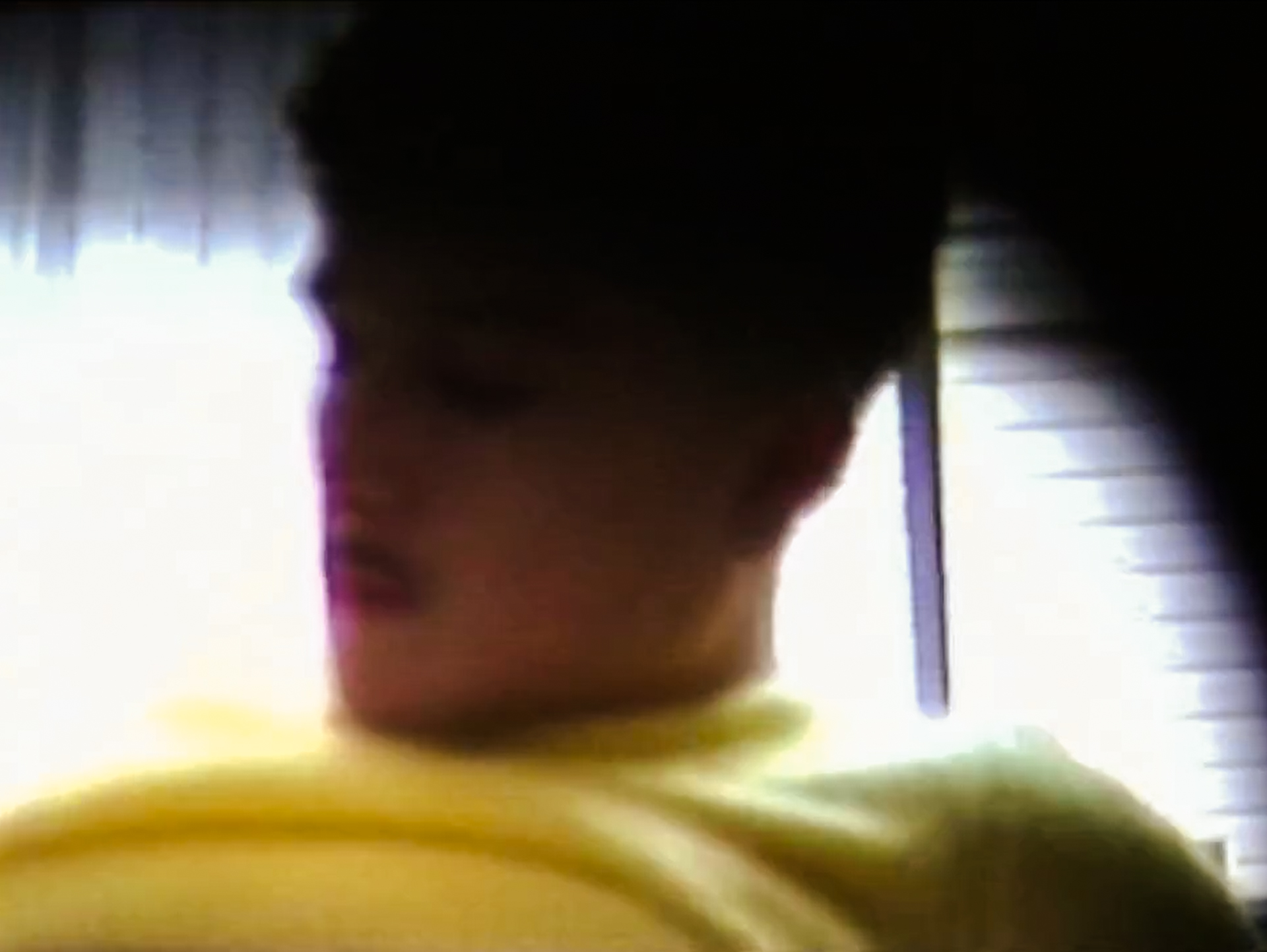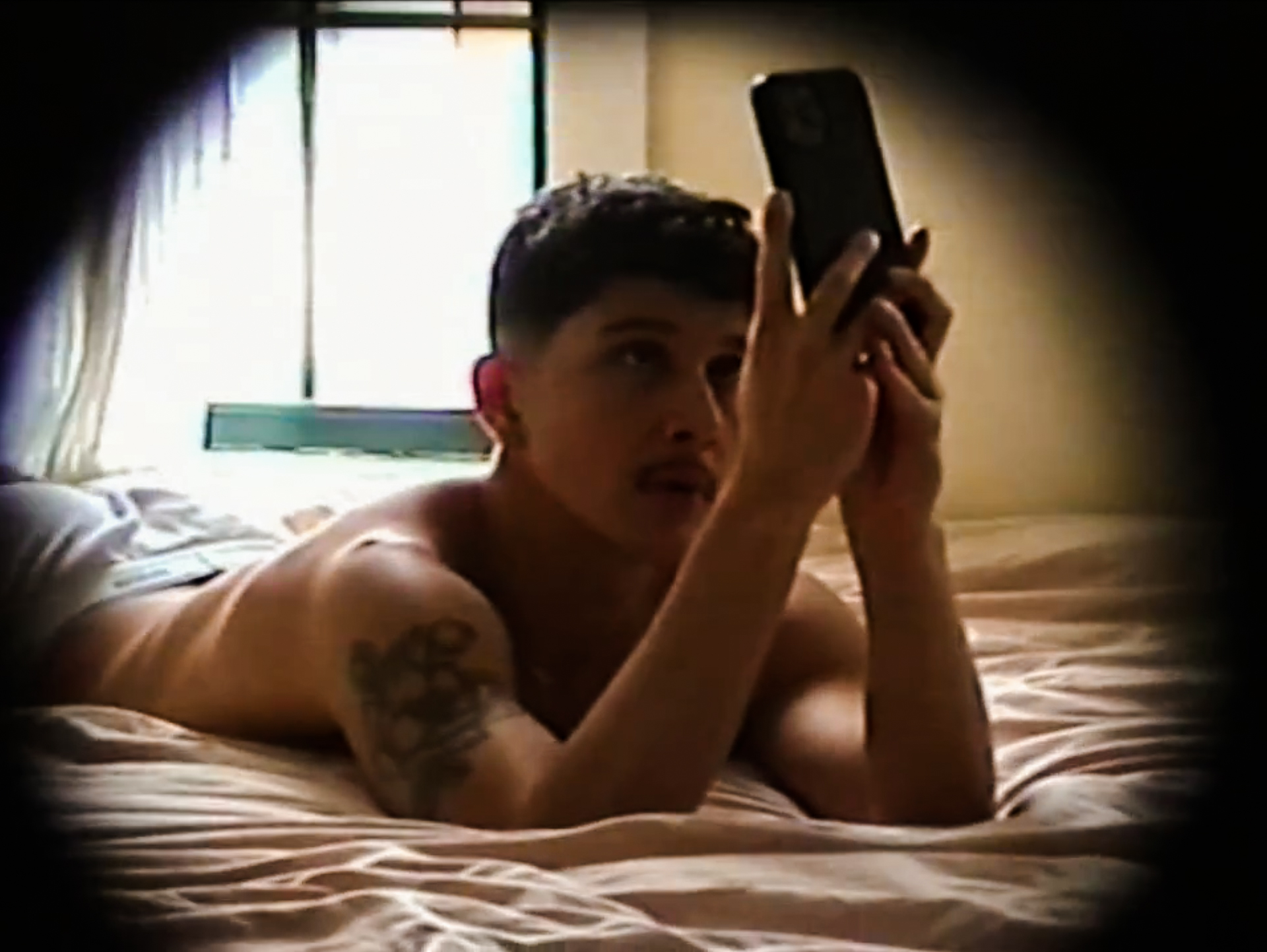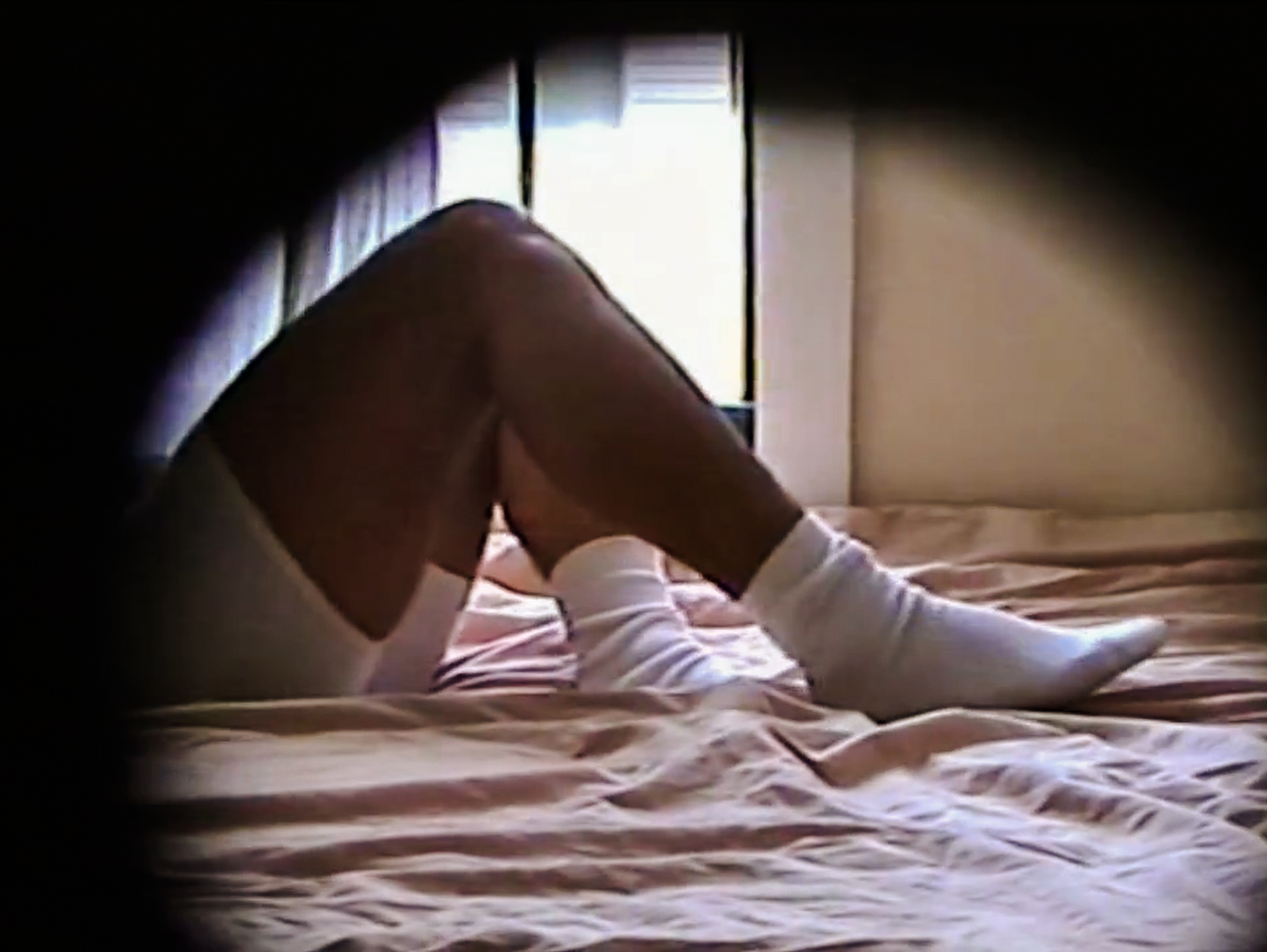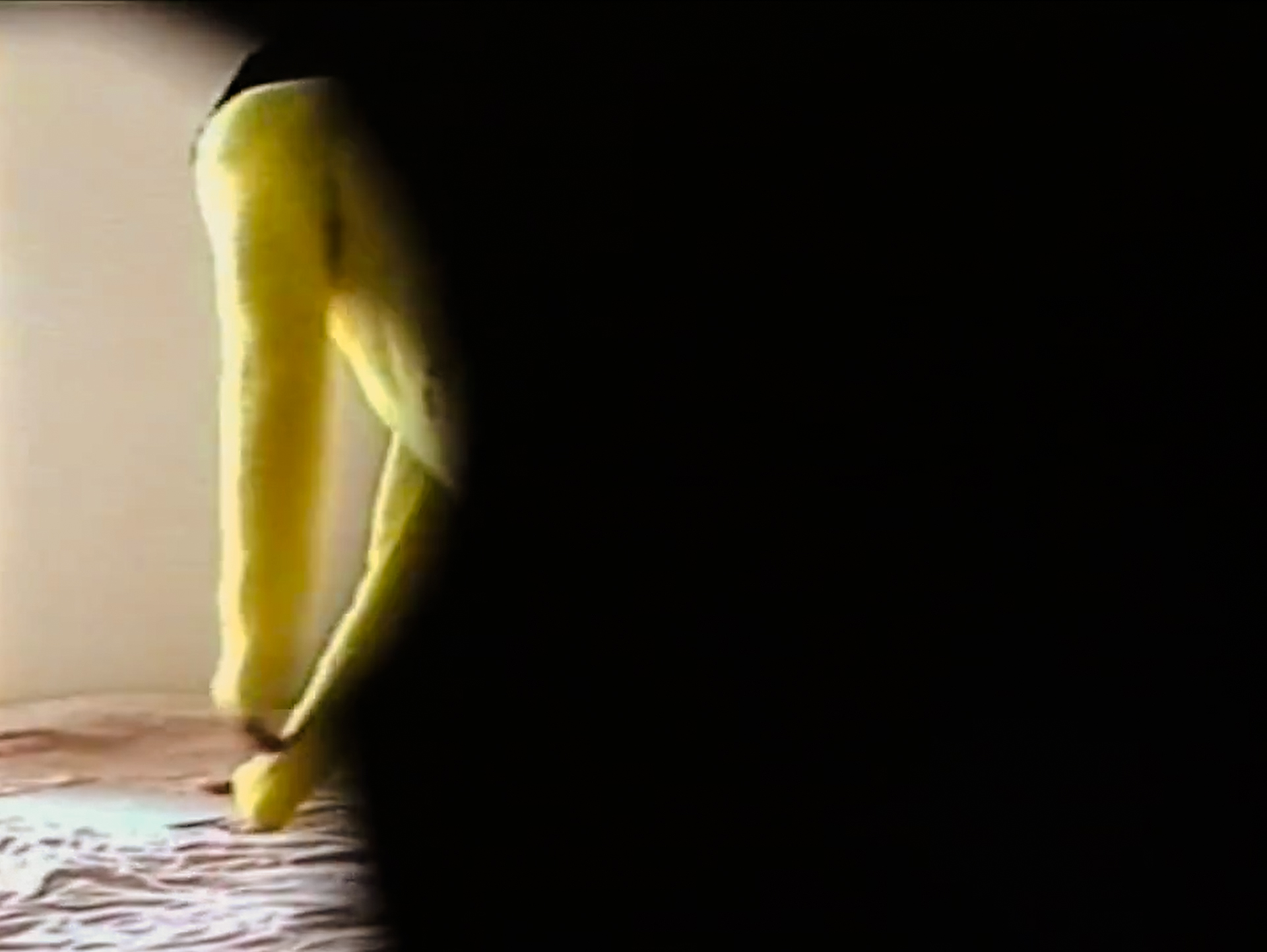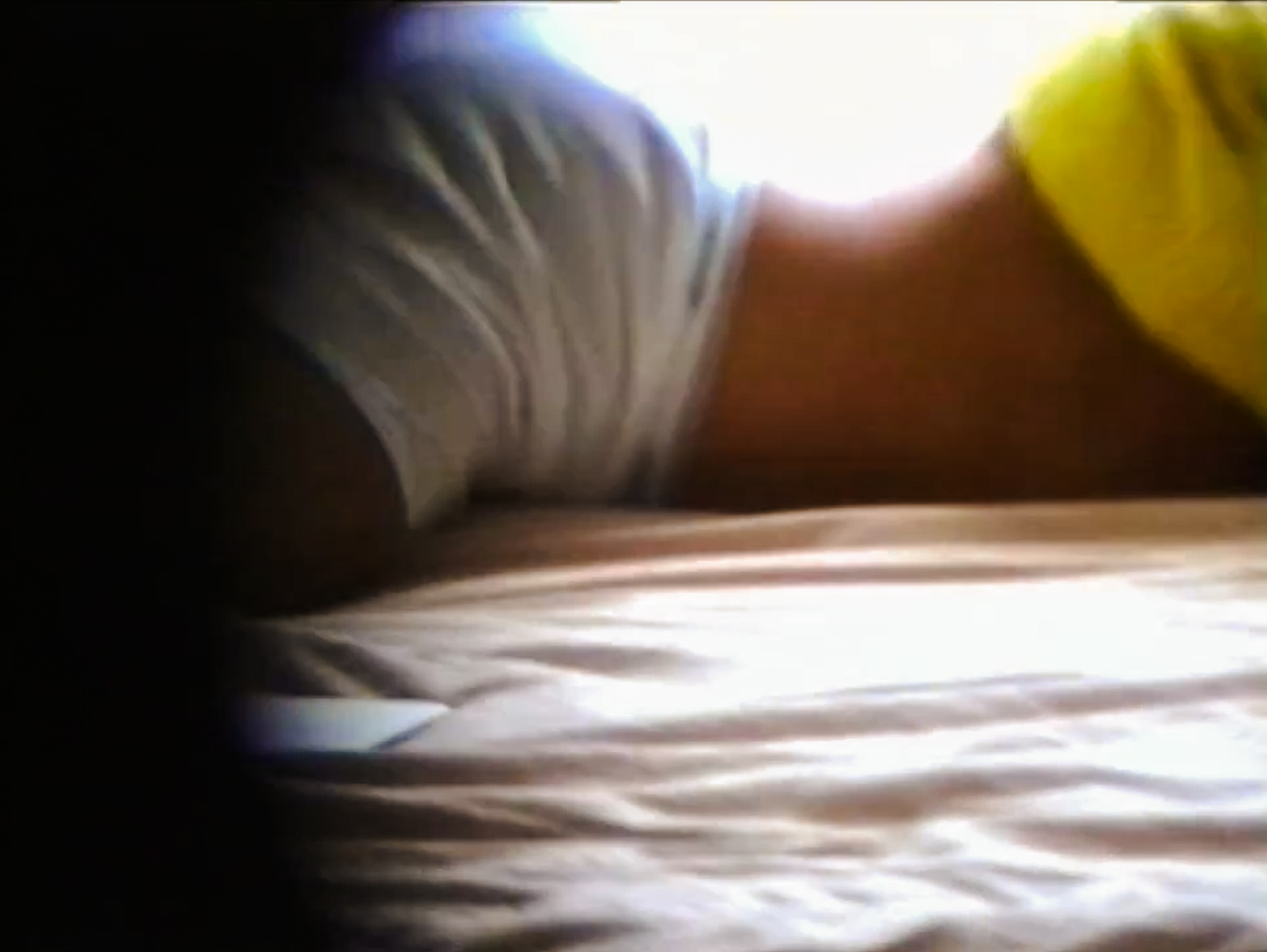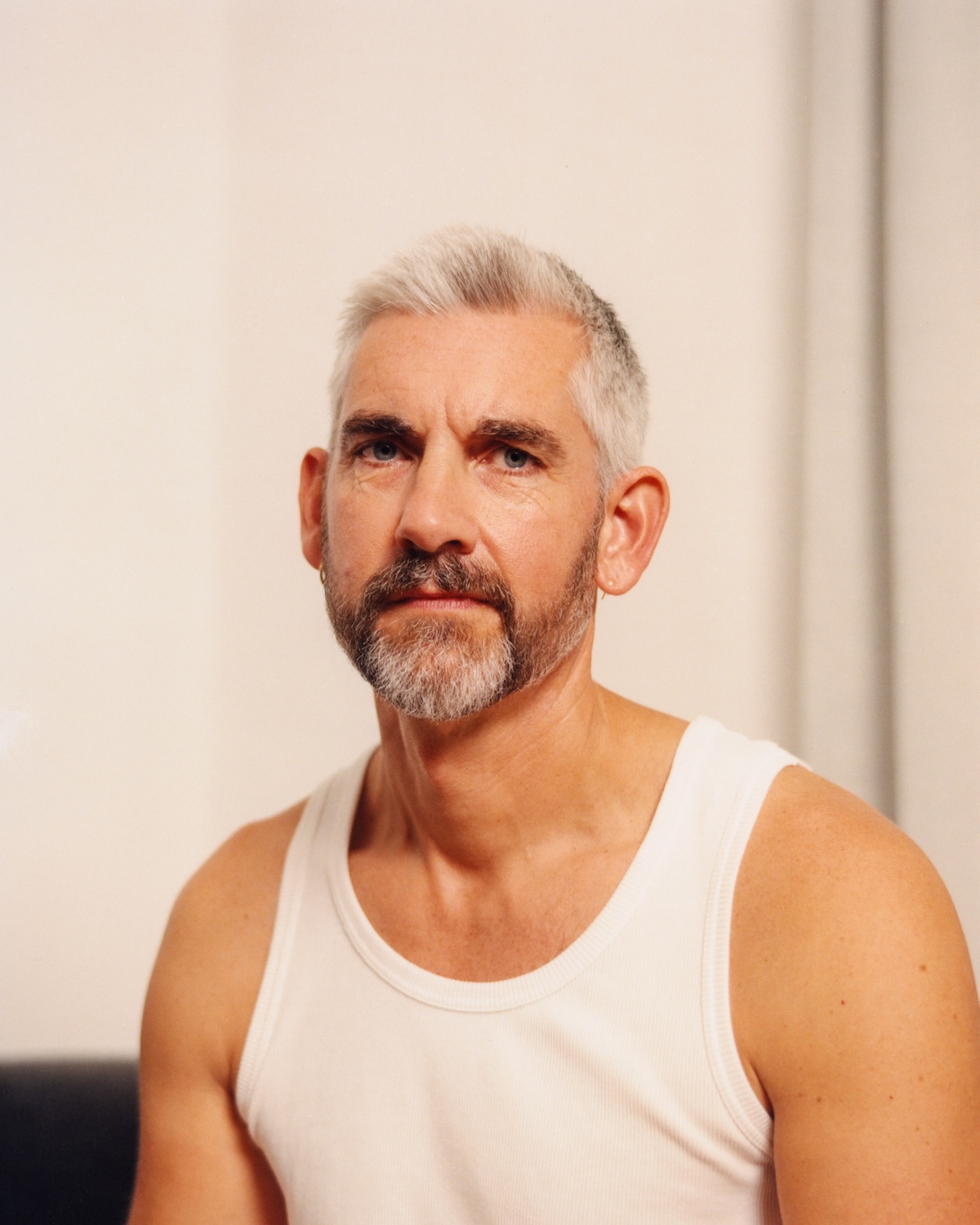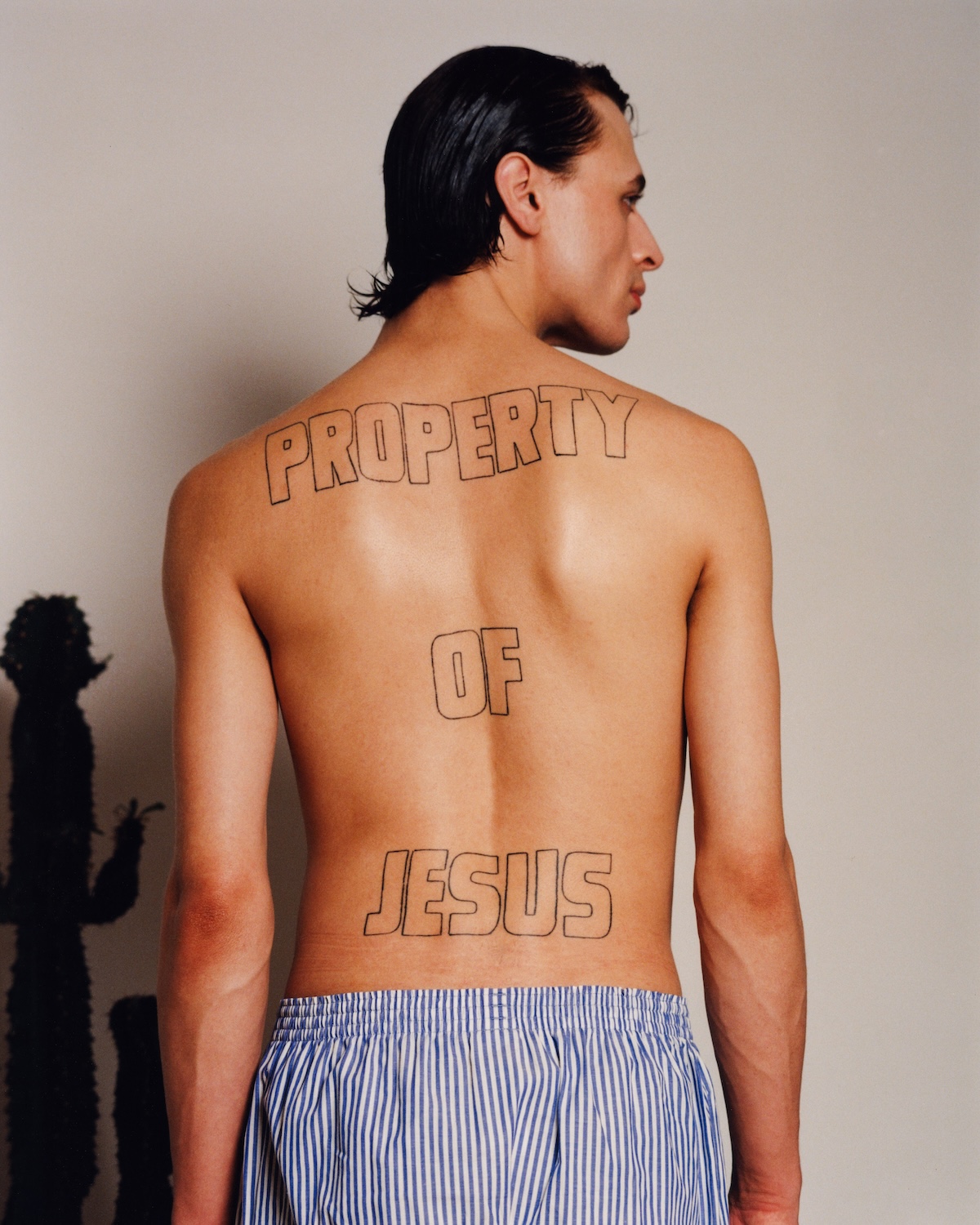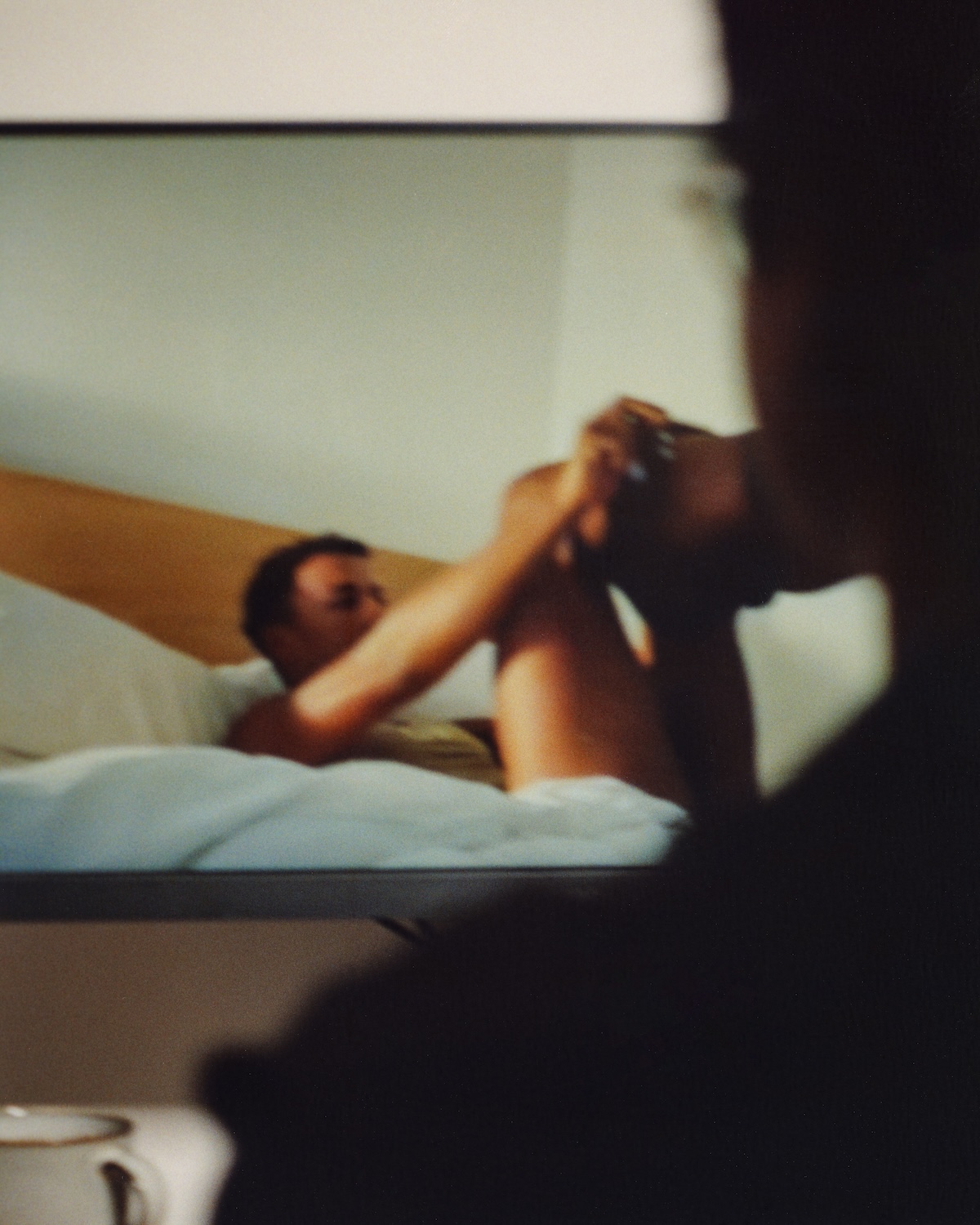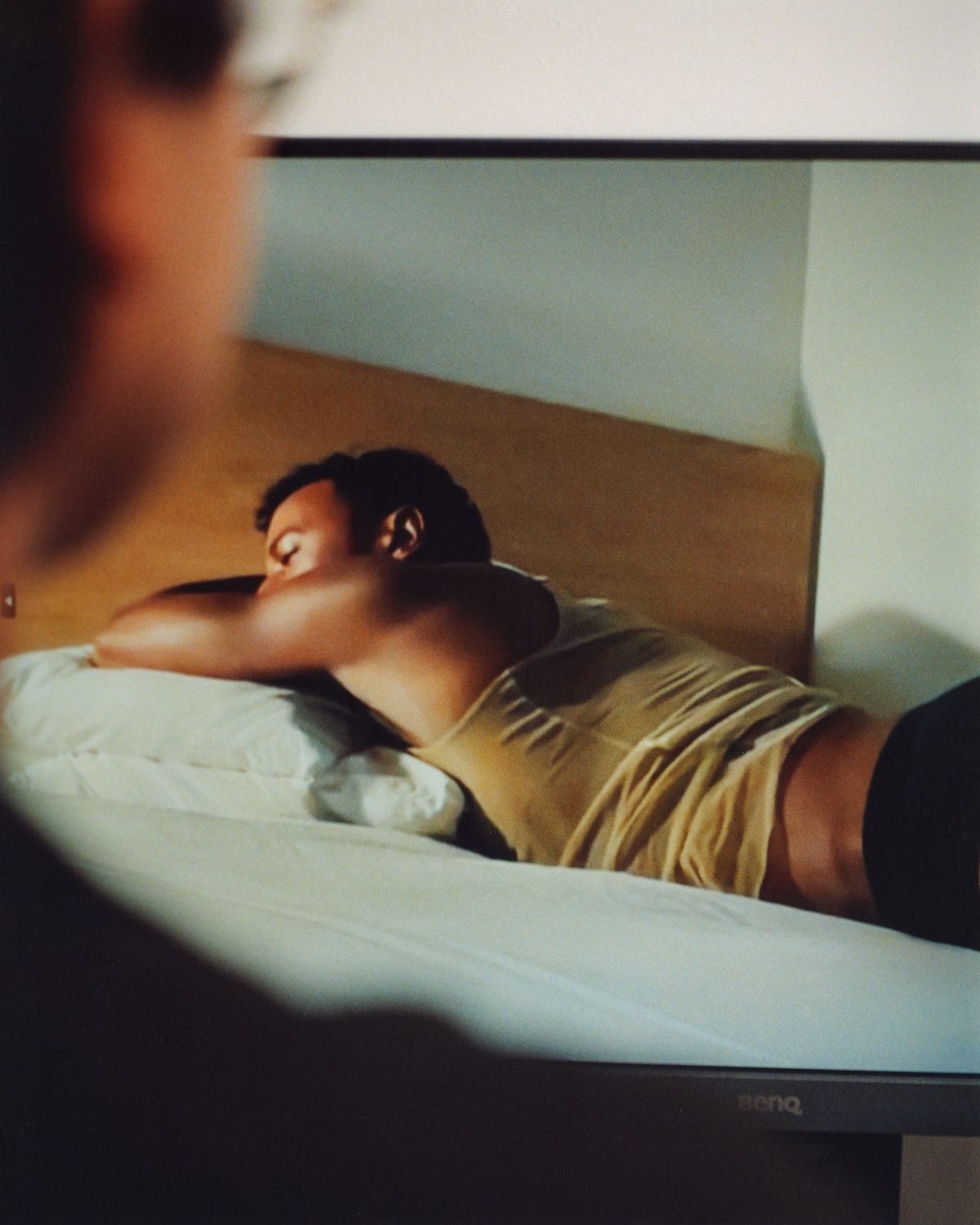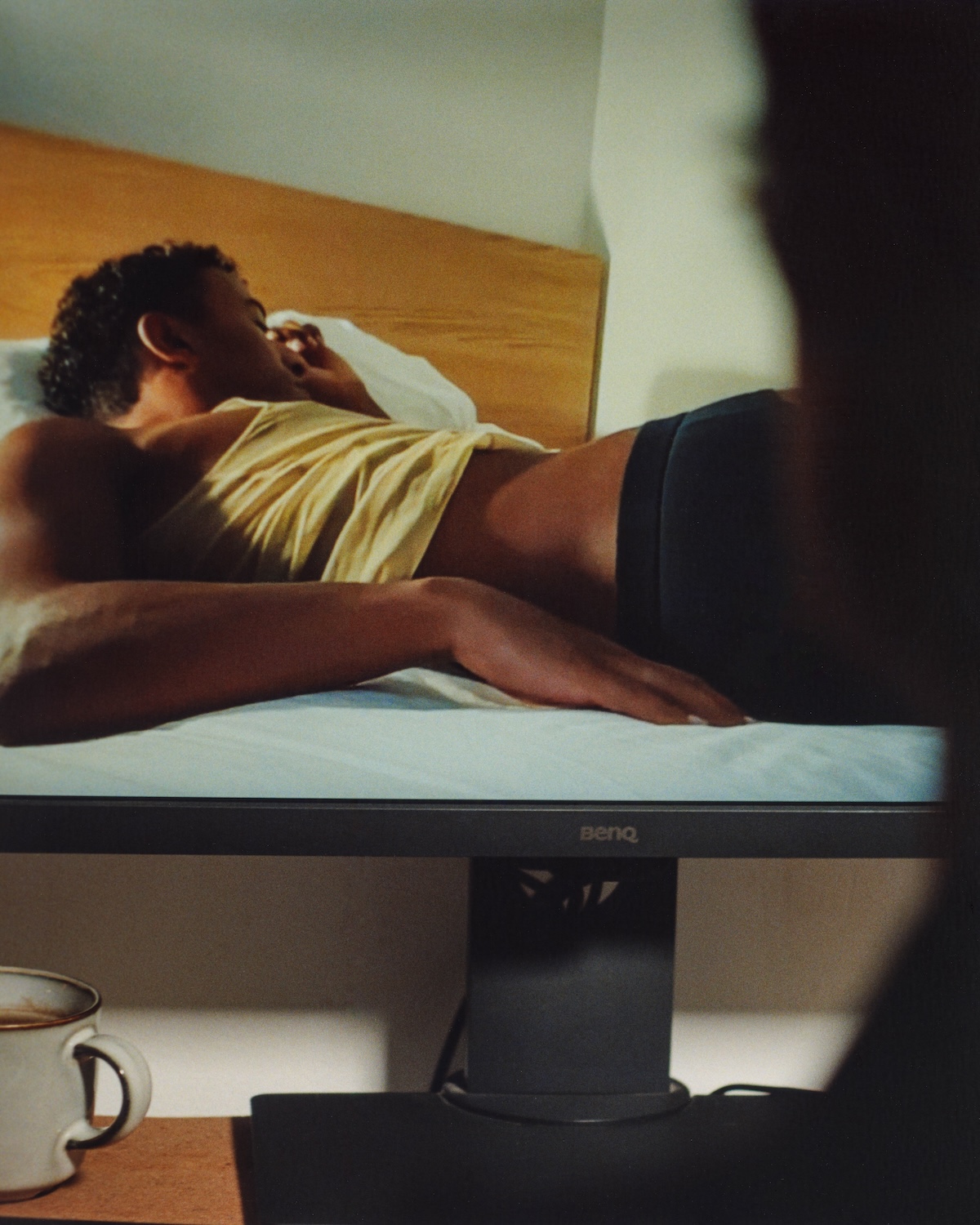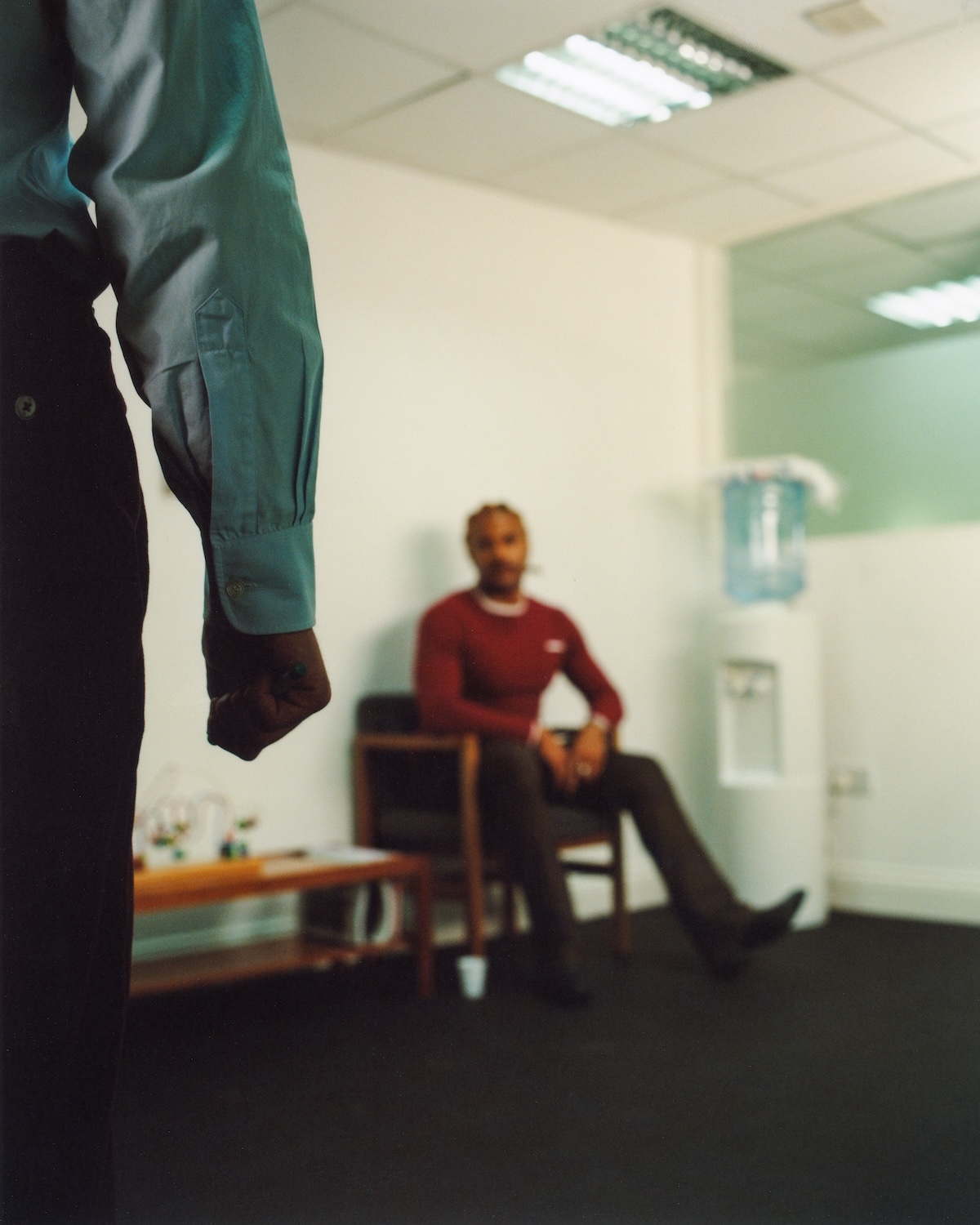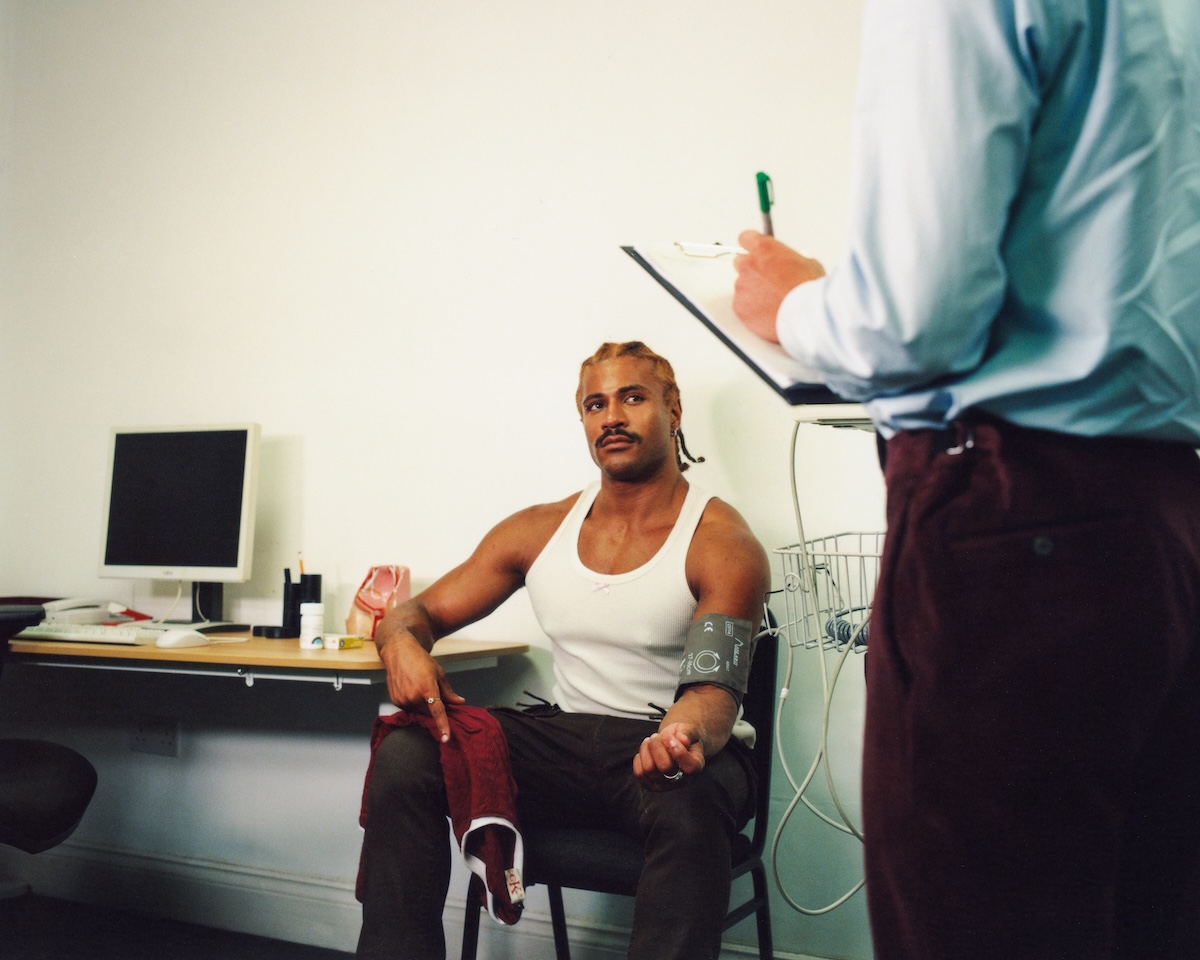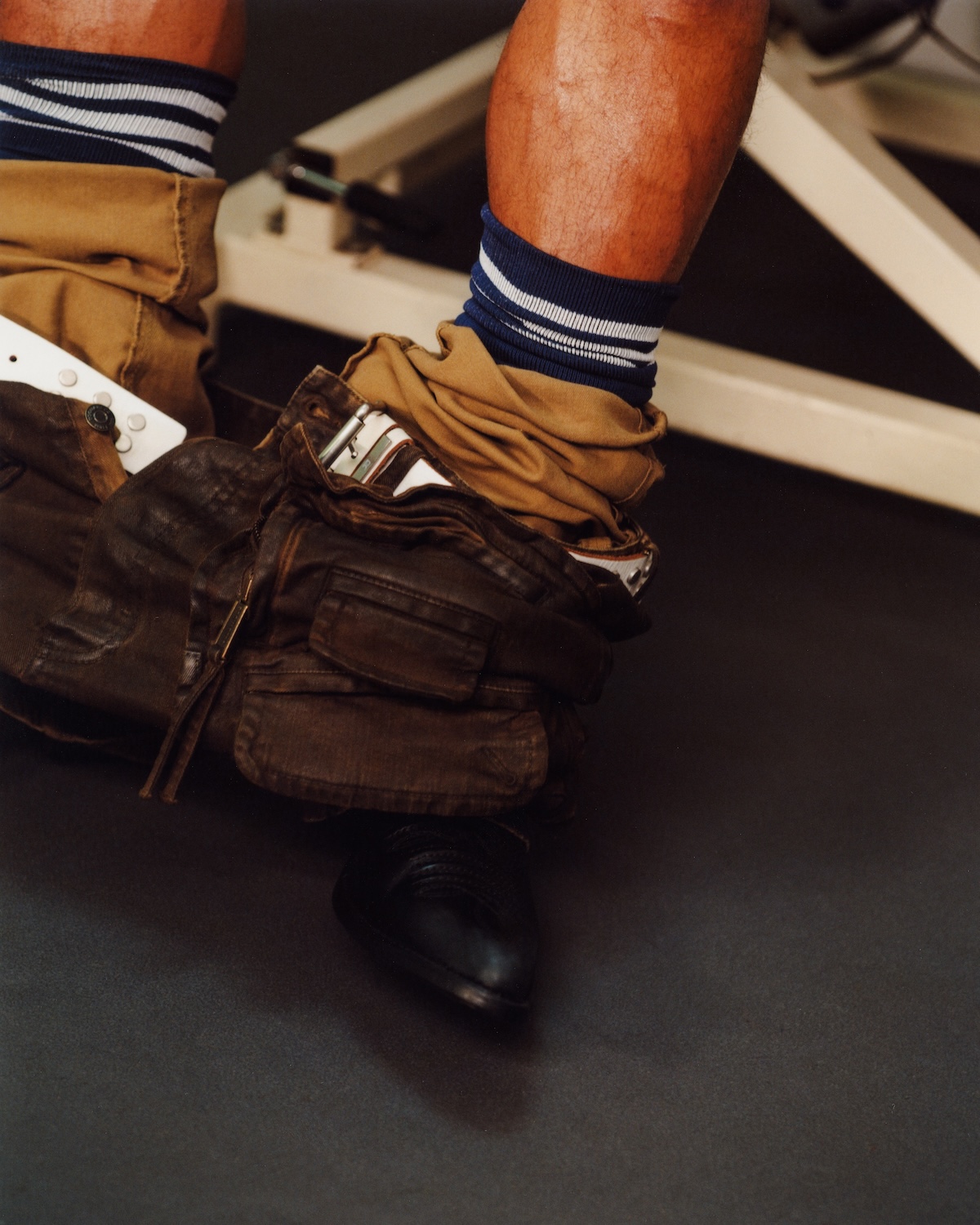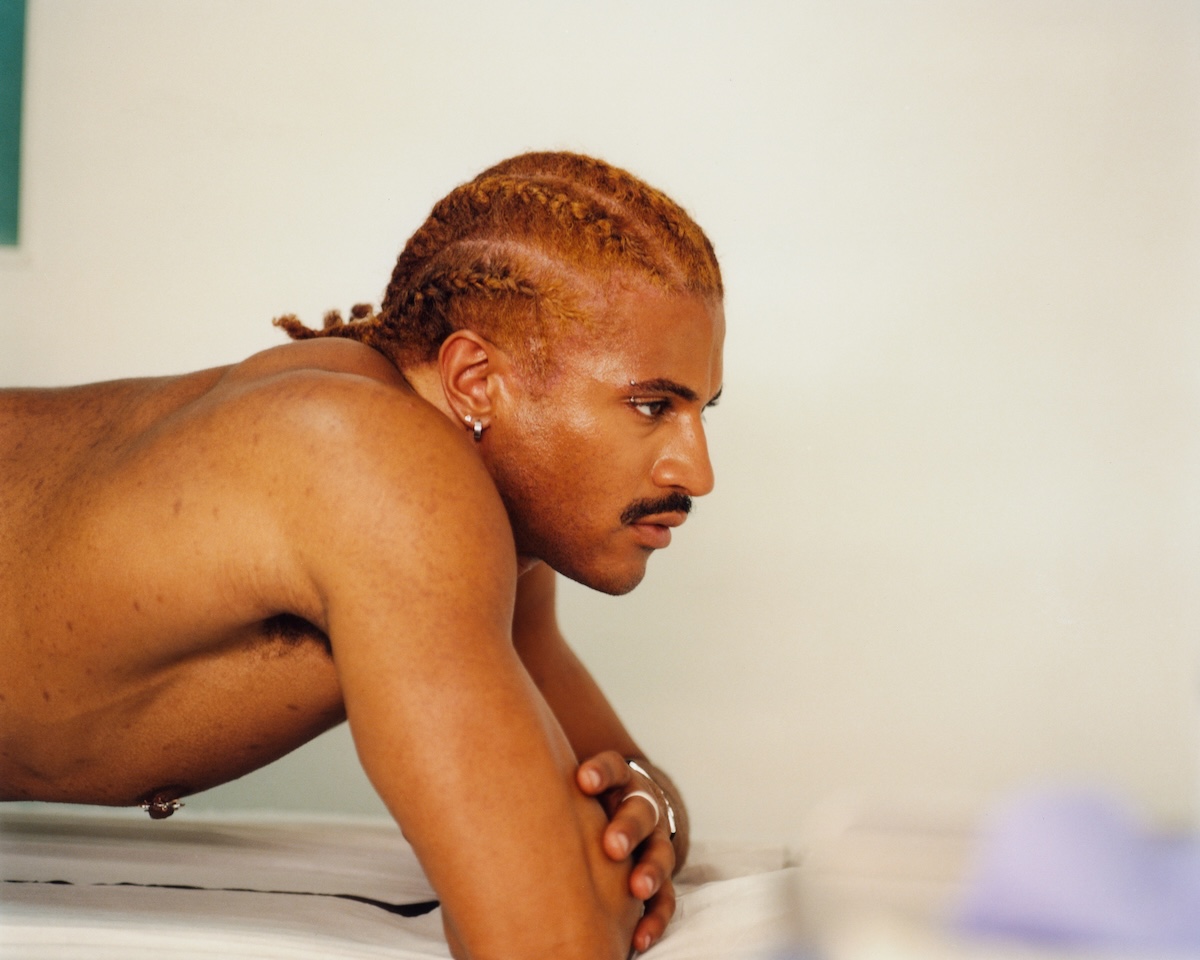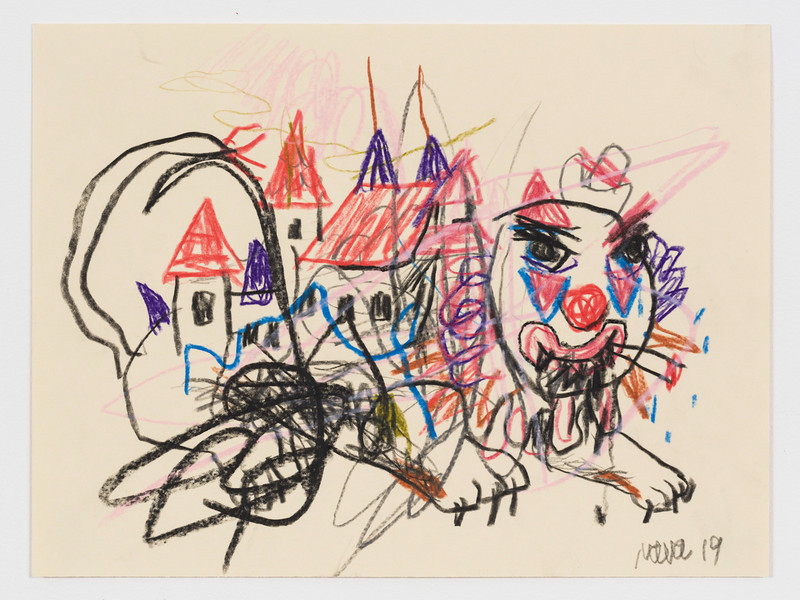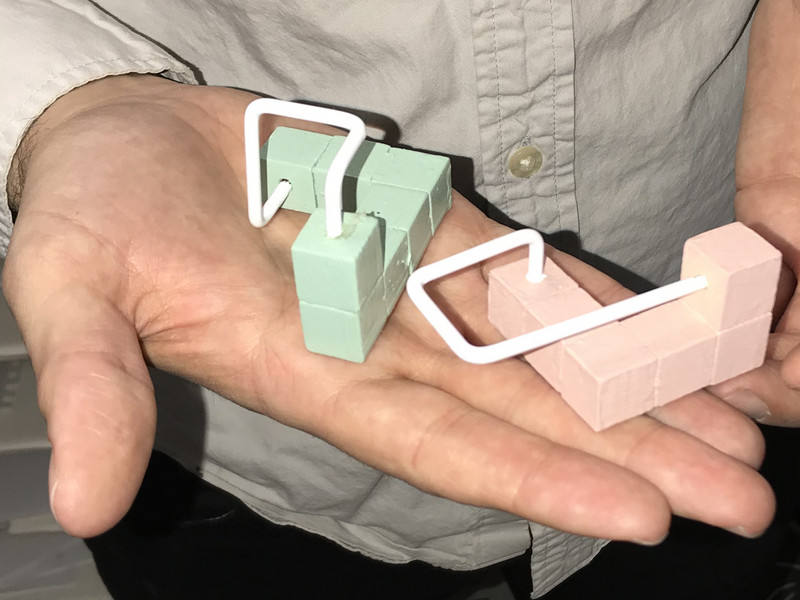Paradise Found
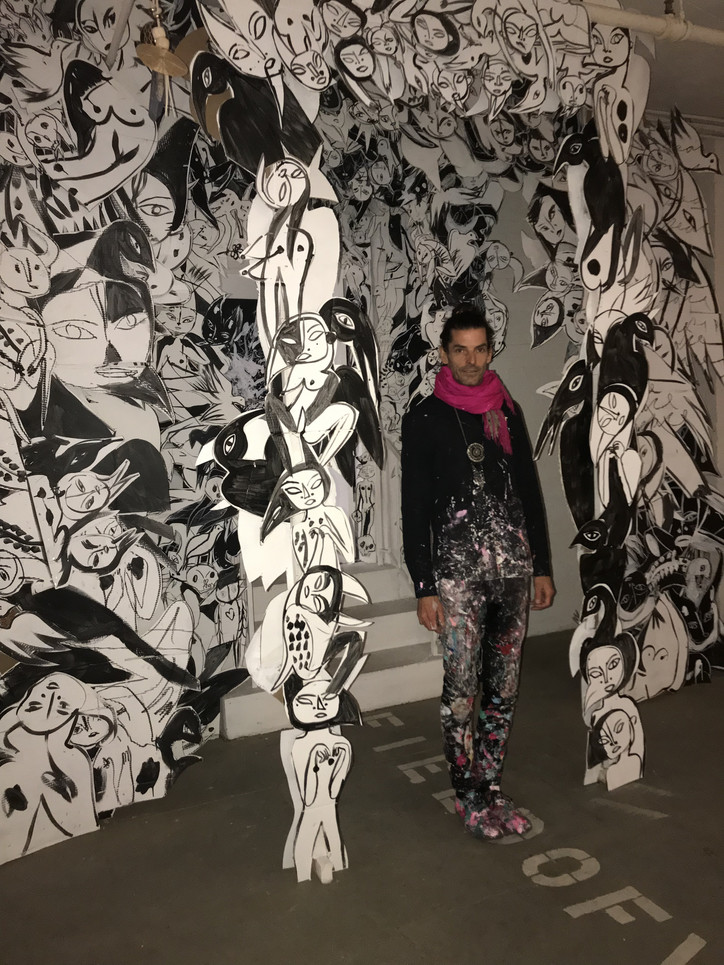
I visited Carlito at his temporary studio, set up in the basement of Mana Contemporary, which he’d transformed into an immersive environment, building a magnificent portal at the entrance, which was in turn approached through a hallway painted in French phrases. The portal was made of simple materials, cardboard and paper, as is all his work — the simplicity and delicacy make it both approachable and precious, like houses made of cards, they feel as if they were about to blow away with the smallest draft of air or suddenly dissolve if you move too suddenly.
The artist is a worldly sprite, his look, accent and demeanor confirm his self-definition as a citizen of the world. He’s one of those people you might meet in a youth hostel in Europe or a drum circle on the beach in Madagascar or South America or Thailand, who laughs easily and speaks cheerfully in compelling Zen riddles. As he showed me around, a low, tribal music played, which he had a hand in producing, and he showed me alcohol bottles that he made for the opening of the exhibition, the liquor itself sourced from a friend who produced it for the show — Carlito had a hand in creating literally every aspect of the upcoming exhibition, reinforcing his mantra of eradicating the borders between artistic disciplines and creative impulses. Everything is in service of the vision.
Our conversation, as you can see below, ended on the subject of churches and our continuing need for places of profound beauty. On the car ride back from Newark, the story broke that Notre Dame was in flames. It was eerie timing, since Carlito and I had just been discussing how, more and more, the contemporary world turns away from organized religion and more toward older, primal belief systems like those he taps into in his work. The societies he conjures were those that danced around the fire, whose art via deep-seeded spirituality was an intrinsic part of daily life. Perhaps the fire of Notre Dame is symbolic of a new era, where the boundaries between the metaphysical and the mundane no longer exist. Carlito’s art exists at the celebratory point of the dawning of such an era. Everything is in service of the vision.
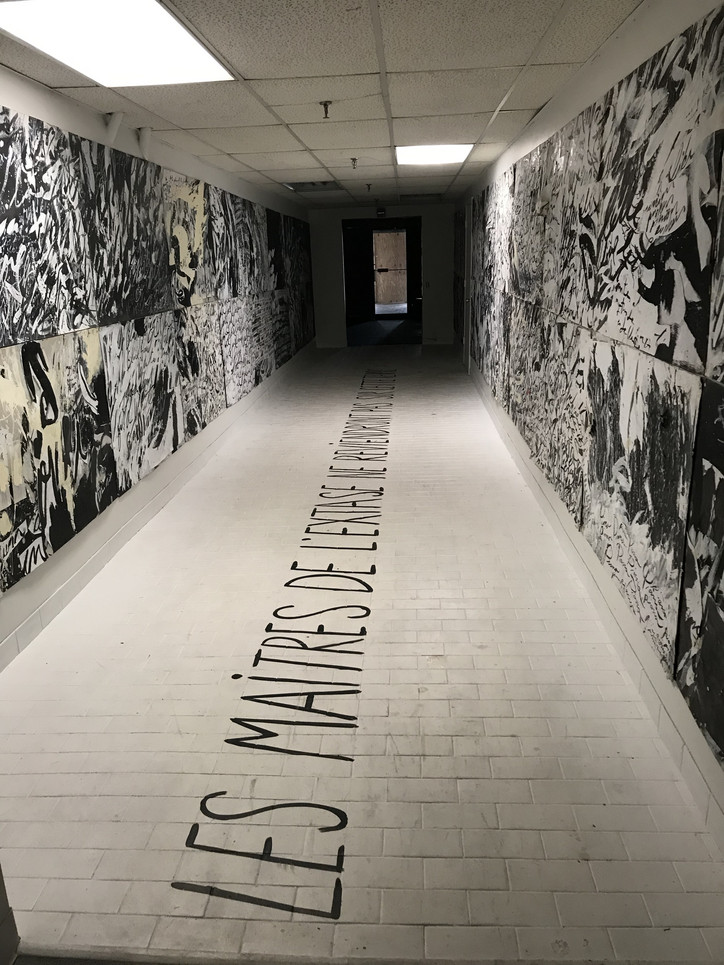
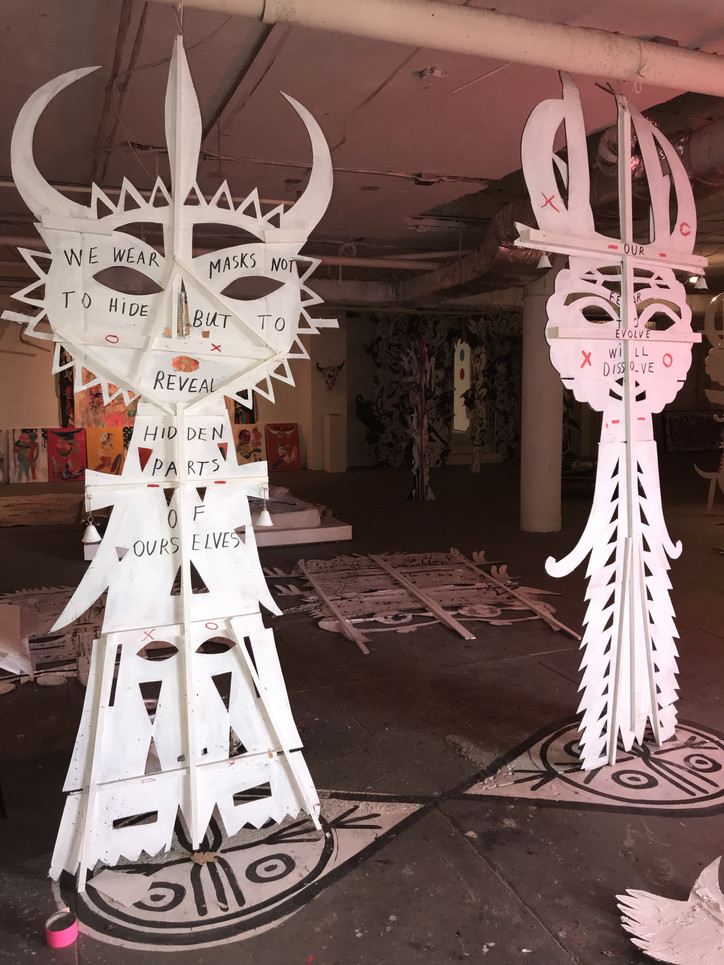
Above: Approach to the studio; studio view.
So let’s walk around.
For me the art studio is very, very important. It’s like a place of ritual, it’s where reality needs to be abandoned and all the problems of the world, and even my own ego, are left behind in service of the vision. I came to serve art — that’s why there’s always a big portal at the entrance of my studio, it’s like, wow, the world of reality is left behind. It’s a bit like in the tribes, when they paint their bodies and they go around the fire, they play the music. For me it’s like losing your human shape, I call it, like don’t think anymore, to channel and really be in the trance to create.
The art seems to speak to that as well, it seems very tribal or primal or something.
Yeah, I love the idea of returning to the origin, instead of always going forward, I think it’s bringing the ancestors and the future together.
I think there’s a big thread of that in culture now, because we’re at such a weird point as humans. I notice a lot of people are thinking about that.
I really believe in the making, the mystic is in the making — I make my own art, I cut everything, make everything, it’s an act of liberation for the art, when you do it, and I love when the art is a bit incomplete, very raw, primal, so people can identify with it. I feel that I leave the door open in the art for the people to come in, so they’re not only spectators, they’re part of this legend.
It feels like an environment.
Yeah, it’s a life experience.

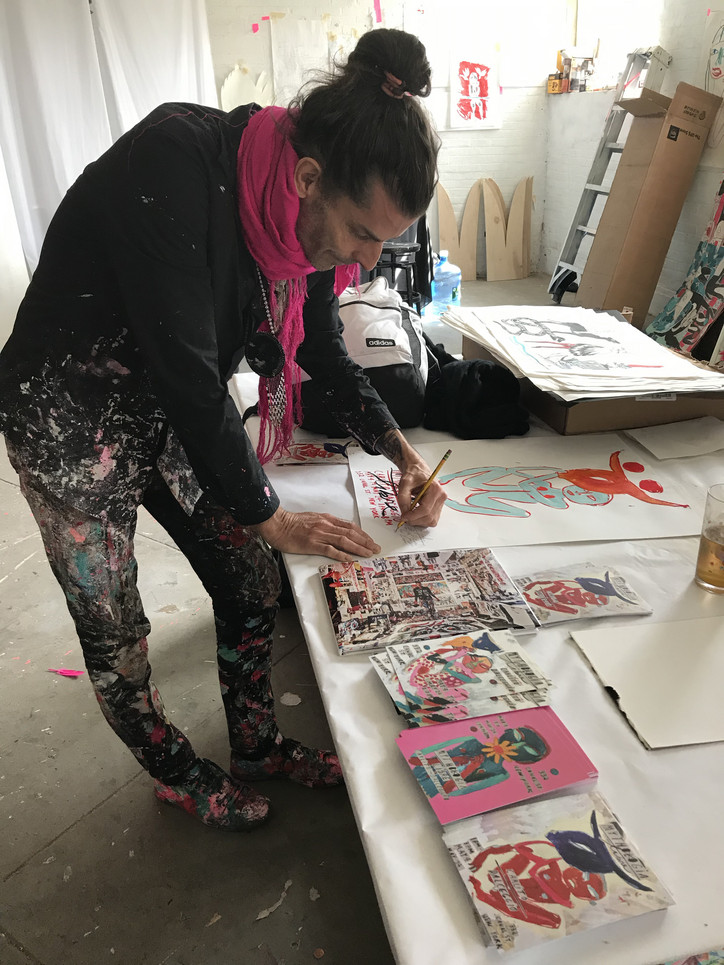
Above: View of the wall with the title of the studio, 'Ritual Flesh'; Carlito signing a picture that he gifted me.
So these are all the pieces that will be on view at Canal Street?
Yeah. The exhibition on Canal Street, that is also kind of a manifesto, a vision manifesto, or whatever you call it, an experience, it’s called ‘Mythologia Libre,’ and it’s a lot about the end of all boundaries. I think there’s a new way to see art, to live art, and for me this is to destroy the boundaries between sculpture, painting, music, poetry, films, videos, so all these media are coming together to create one mythologia.
So you produced this music?
Yes, we created the whole soundtrack with a musician, with the poetry that, there’s one actress called Golshifteh Farahani from Iran, that I sent her my poetry, she recorded it, and then it comes back here, we took parts of classical music remixed — it’s a bit like the way I create my paintings, there are a lot of elements from different cultures and states of mind, I do the same with the music. You can also see some video loops — in the studio I have an animation table, so all the films I make here. I make my paintings with collage, so I take a lot of pieces before I do the collage with the painting and bring them to the animation table.
And what do you use for collage, what do you gravitate toward?
You know, I mostly use my own samples. I call it my supermarket.
So it’s all from you, it’s all produced from the same source.
Yeah, I do a lot, a lot of strokes, faces, characters and papers, and I call it my supermarket. When I’m doing a painting and I need a certain face with a certain emotion, I look for it and when I find it, I destroy it, cut it, mount it to the canvas. I call it archeology from the riverside, I put treasures and then I cover them a bit. So there’s a lot of layering in my paintings.
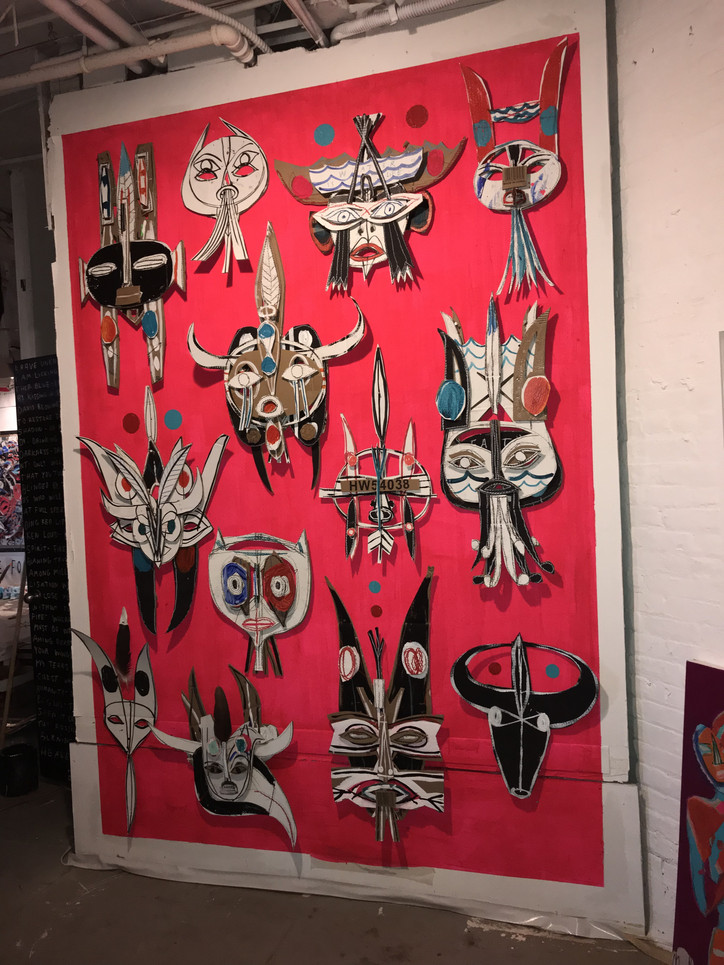
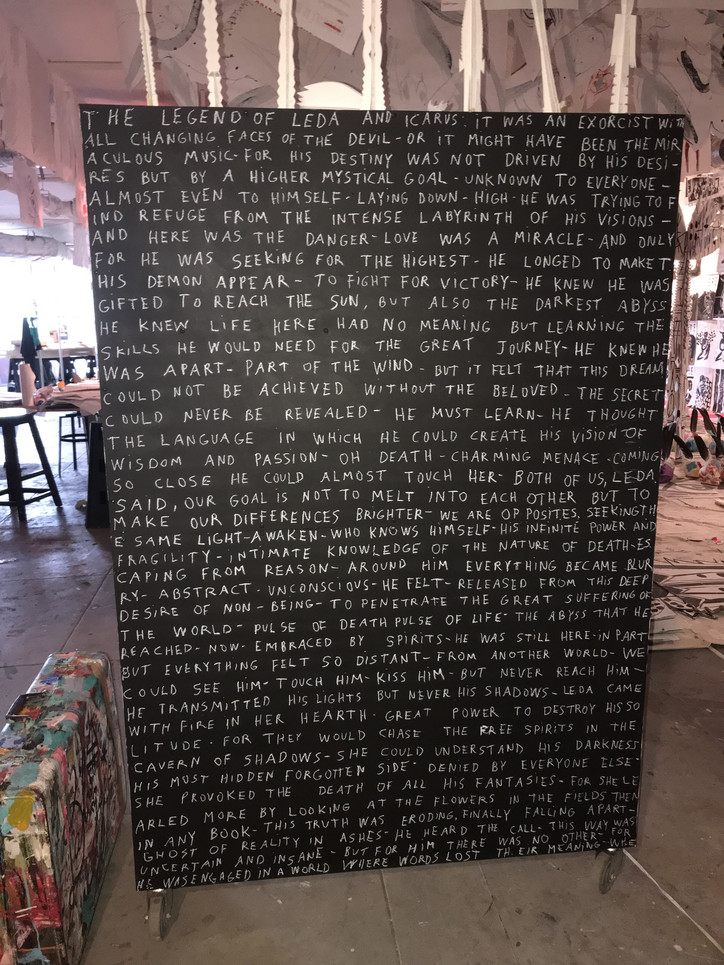
Above: Studio views.
They’re very three dimensional. What is the name of this one?
This one is, ‘We must find a name for them before they are forgotten.’ And it’s a lot about this story of Standing Rock, with the natives there, and it’s really to give back the wisdom and the land to the first nations all over the world.
And where are you from?
I was born in Montreal, but I’ve always considered myself a citizen of the planet, I’ve never believed in boundaries. So I travel, and I have my studios in many different cities, from Mexico City to Brazil to India to Paris to New York, Istanbul, and now back in New York.
And you feel like there’s this thread in ancient cultures, that they all have this similarity?
That’s why the ‘Mythologica Libre,’ there’s no source of these myths, they carry the wisdom of the planet, and the wisdom of the ancestors, and we tend to forget about them, but they carry, really, the reason for our existence on this planet. So it’s very important to provoke these myths, to love them, to carry them, to build a bridge for them and carry them to the future.
I was just talking about that with an artist — I didn’t talk to him about it, but about him, I compared him to Disney, because I think Disney does that a lot, where they take these old myths and then repackage them for modern audiences. Would you agree with that?
We’re transforming them. It’s like everybody who is carrying the myth with them, we put ourselves into this myth and our own soul is going to feed that myth, that energy, and that’s going to carry it into the future of humanity.
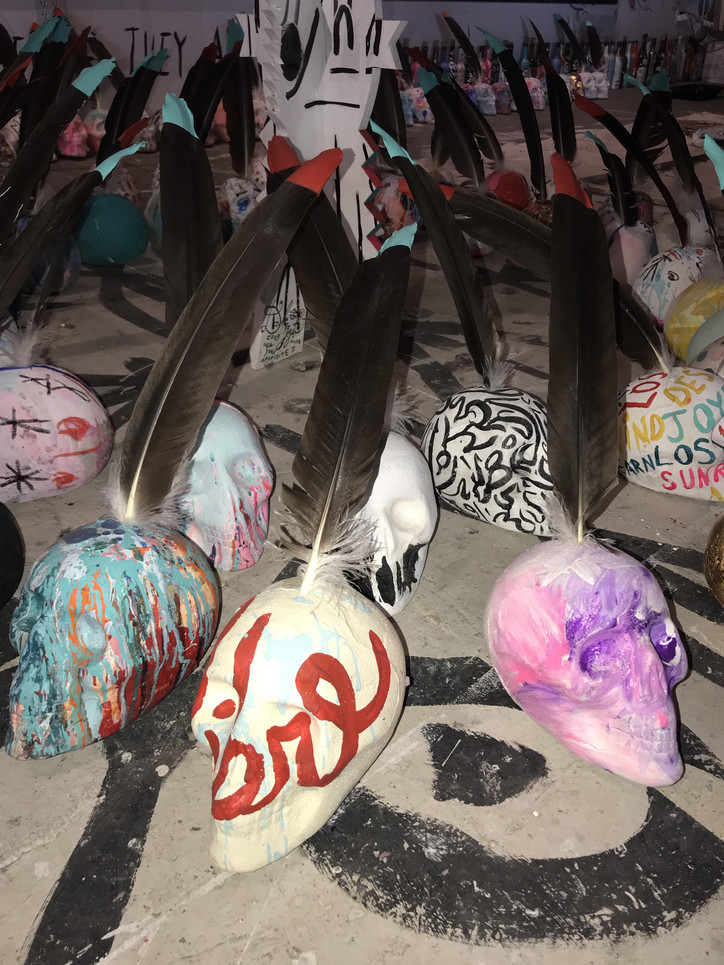
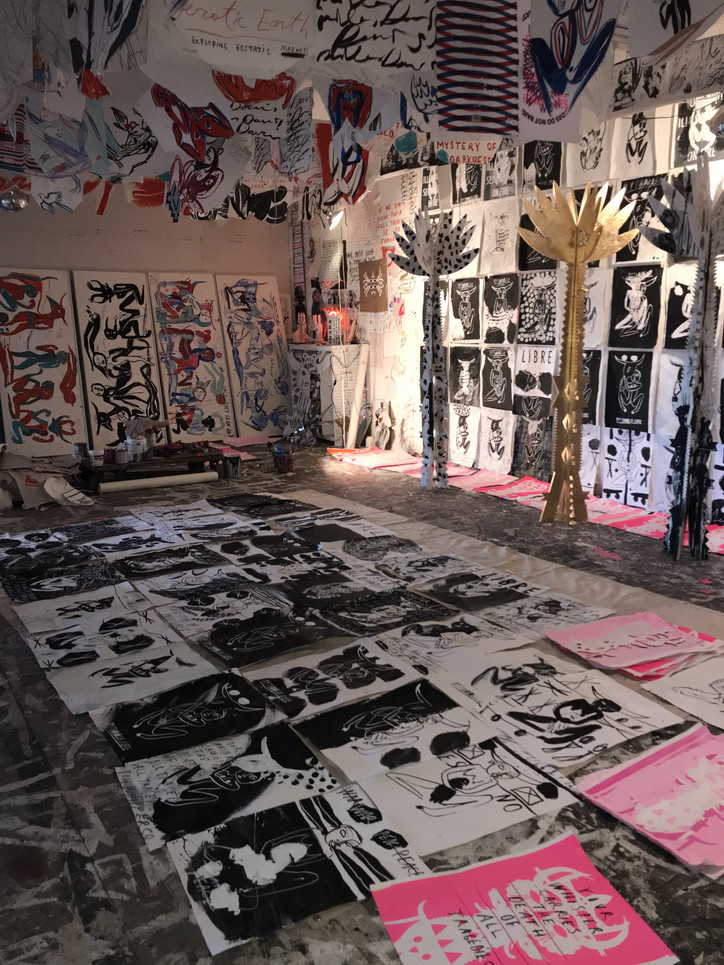
Above: Studio views.
Now what is ‘Ritual Flesh’?
That’s the name of the studio. Every studio has a name, you know.
Oh okay! What are some of the other names?
There was ‘Born in Exile,’ ‘Color Palace’ one time, ‘Freedom Temple’ in Mexico City. It’s part of the mythology for me, it’s like every studio is a bit of a kingdom that we built. So to give a name to the physical location gives it an importance, and a visual identity, too, and the exhibition is really in the same state of mind that is not only the production I did in the last six months, it’s more of a legend and a story that we built over years that we want to transmit to the world, to inspire. For me, to trigger the imagination and inspiration is very important.
So what is the story you’re telling here?
You know, the story is never very… I don’t define it or explain it because I want everybody to come and create their own legend, I put pieces of this legend, there are some keys, and then everybody that comes in will feed it, and transform it and make it their own.
It almost feels like hieroglyphics.
There’s one thing I research a lot called ’the secret alphabet,’ there’s a lot of this in this exhibition. I believe in a set of symbols that will become universal, that will reach every culture, and with this set of symbols everybody can communicate, and it’s the way to reach peace. Reaching peace is very big for me.
I was just thinking about that today, because I was watching this guy play this game on his phone that was all numbers, and they say that mathematics is the universal language, that we would be able to communicate with aliens through mathematics. Do you ever think about mathematics in that way?
Maybe I’ve transformed mathematics into my own symbols. I read a lot of books and I have a lot of knowledge, but I transform the knowledge into colors. I tend to be a bit like a monk in the studio, I’m here for hours and hours, and I don’t spend much time going to exhibitions and seeing what’s going on in the art world. I say the less I know what’s going on, the more I’m pure to my own vision, and I’m connected with the spirits. There are a lot of people who know about symbols from other cultures, and sometimes they come and they say wow, this is coming from there, but for me, I didn’t know, I’m just channeling this image of these symbols.
'Mythologia Libre' opens TONIGHT at 6pm and is on view through May 24th, 2019, at 332 Canal Street.

